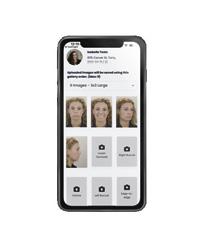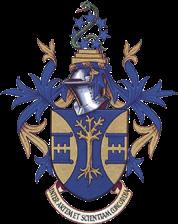
Spring 2025 I Volume 31 I Number 1











In this issue
BOC2025 –find out more
COG Symposium Report
BOSF –inspiring case studies
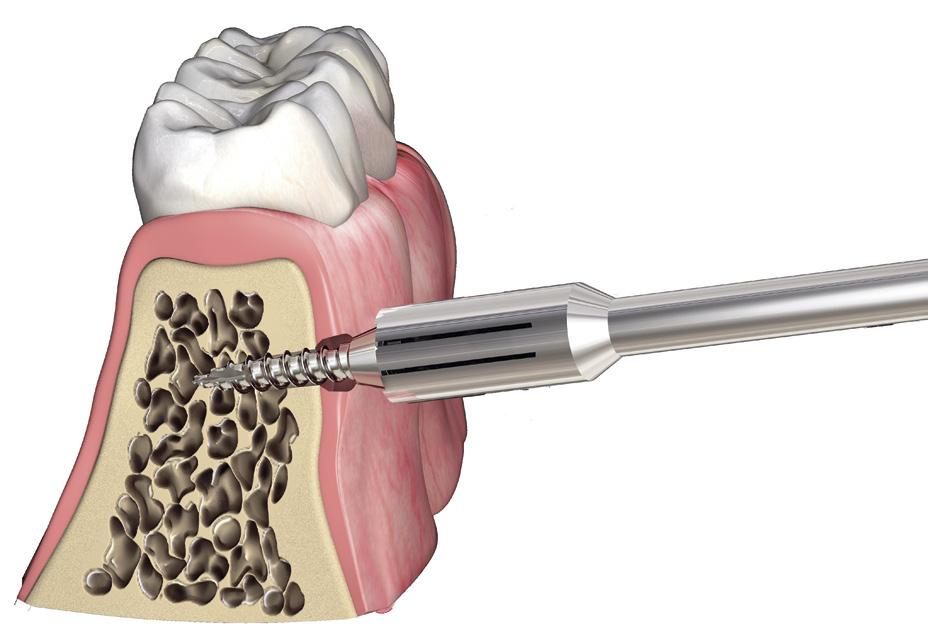
tomas® anchorage system Now exclusively available at TOC


Spring 2025 I Volume 31 I Number 1











In this issue
BOC2025 –find out more
COG Symposium Report
BOSF –inspiring case studies

tomas® anchorage system Now exclusively available at TOC



“I have been using the TOMAS pin in my clinical practice for more than 10 years and we now also use the system in our hospital and postgraduate training programme. The attraction of the TOMAS pin and accessories is both the simplicity and versatility of the system. To support the product I like the ongoing educational opportunities and support provided covering topics such as the importance of the pin design, the relevance of cortical bone thickness, site selection for insertion and when to pre-drill, and appropriate torque at insertion to minimize risk of failure.”
Mr. Trevor Hodge Consultant Orthodontist, Leeds Dental Institute
Contact us now to arrange a free demo or visit our website for more information
As I step into my second year as editor of the British Orthodontic Society newsletter, I find myself reflecting not just on the evolution of our profession but also on the broader changes shaping our world. In March, as we celebrated International Women’s Day and month, it was an opportunity to recognise the strides made by women in orthodontics and the incredible contributions they continue to make in shaping the future of our field.
Today, more than ever, we are witnessing a shift towards inclusivity, mentorship, and leadership for women in dentistry. As Ruth Bader Ginsburg so powerfully said, “Women belong in all places where decisions are being made.” That statement rings true in our profession, where more women are taking on leadership roles, driving innovation, and inspiring the next generation of orthodontists.
One of the most fulfilling aspects of my career has been the opportunity to empower others—whether it’s my patients, the students/registrars I mentor, colleagues who attend my courses or those I have supported and guided. I firmly believe that through education and mentorship, we not only elevate individuals but also strengthen the profession as a whole. It is about inspiring confidence, and being a voice for those who may not always feel heard.
As a strong advocate for women in orthodontics, I believe in the importance of not just mentoring but actively championing female leadership within our field. We must continue breaking down barriers, supporting each other’s ambitions, and ensuring that women’s voices are heard at every level—from clinical practice to policy-making and research. It is through collective effort that we create lasting change, and I am committed to using my platform to amplify the achievements of women in our profession. As Michelle Obama reminds us, “There is no limit to what we, as women, can accomplish.”
As members of the British Orthodontic Society, we have a responsibility to champion a profession that is diverse, inclusive, and forward-thinking. Supporting mentorship, advocating for fair opportunities, and encouraging leadership among women will ensure that the next generation of orthodontists, regardless of gender, thrives in an environment of equality.
The future of orthodontics is not just about technology or technique; it is also about people. The rise of women in orthodontics is a testament to how far we have come, but there is still work to do.
As I continue on my journey, I will never shy away from using my voice to empower others, to challenge limitations, and to help pave the way for future generations.
Strong women lift others as they rise, and I am proud to stand alongside so many trailblazing female colleagues who are shaping the future of our field.
Read about some of these incredible women in the pages of this issue and I look forward to supporting the many more that will follow.
Arti Hindocha
BOSNews Editor bosnewseditor@bos.org.uk

British Orthodontic Society
Registered Charity No 1073464
Royal College of Surgeons of England 38-43 Lincoln’s Inn Fields London WC2A 3PE Tel: 020 7353 8680 Email: executivesec@bos.org.uk Website: www.bos.org.uk
BOS is a Company Limited by Guarantee Registered in England and Wales, Company No. 03695486

I write this, my first report, with a few short, but hectic weeks under my belt as Society President. It is undoubtedly the highlight and greatest honour of my 40 years since starting dental School to serve in this role. It is also rather daunting.
I am no stranger to the workings of BOS, having contributed on OSG and BOC committees and as Scottish co-chair for many years. However, having “shadowed” Nikki Atack in the role for the last year, I now have a far deeper insight in to the huge breadth of society activities and the selfless dedication of so many volunteers in so many areas that affect our specialty. It really is inspiring and uplifting to work alongside a team of volunteers who give so freely of their time, knowledge and experience for no reward other than the good of the specialty, colleagues and patients.
I would like to thank Nikki for her tutelage and ongoing wise counsel and thank retiring Patron, Tony Ireland, and trustees Simon Littlewood ( Honorary Secretary) and Anjli Patel (External Relations) for all their hard work. I hope that you all enjoy your welldeserved breaks from BOS activities.
I would like to welcome our new Honorary Patron Roz McMullan and fellow new trustees, Claire Bates (Honorary Secretary) and Hayley Llandro ( External Relations) and look forward to working with you all and to your camaraderie in the years ahead.
Claire recently asked me what my objectives for my tenure were. I admitted that my overriding aim was not to “mess it up”. I hope that the Society in 3 years’ time is at least as strong as it is now.
I am fully aware of the many challenges facing the specialty and the society itself. As a specialist practitioner, I hope to bring a fresh perspective to the role, with experience of recent ISSUES affecting primary care provision. The business environment has changed markedly with inflation, staffing costs and recruitment exacerbating the real downward trend in fees. However, I appreciate that all groups are facing threats in provision of their services. Consultant recruitment is a pressing problem with the viability of units threatened. Curriculum changes and university funding crises are affecting training and the attractiveness of an academic career. We exist in a symbiotic relationship with our colleagues in different areas of the specialty and the BOS must be a strong unified voice to those with influence over orthodontic training and service provision.
Board members have been attending meetings to engage with the BDA, the CDO and regional teams, to ensure that during the crisis in NHS General Dental Provision, Orthodontics is not sidelined as it is perceived to be a lesser problem. We are working hard to ensure that orthodontics is acknowledged as being a key element in long term oral health strategies.
I hope that we will be able to strengthen the financial position and membership base of the society. Grant and Rupert have been focusing relentlessly on getting to an equilibrium where society expenditure is matched by income. We can all help in this and indeed, have a responsibility to do so. I implore you all to attend your group meetings and benefit from the excellent programs that your colleagues have laid on for you. Please register for BOC Wales 2025, our flagship event with a wonderful balance of scientific, clinical, business, political and not-least, social offerings. BOS will benefit, but so too will you, both directly and from the stronger society that we become. Make these meetings a central fixture in your busy diaries. We have so many competing pressures on our time, but the broad, unbiased education and professional exchange from BOS events really is unique.
I have just arrived in Rome for the WSLO conference and have taken the chance to visit the magnificent archaeological site at Ostia Antica. As I viewed the Forum, my audio guide told me it was the place where everyone came, young and old, high and low status, local and stranger, to meet, catch up and exchange ideas. I would like to think that BOS is itself, such a broad forum.
To strengthen membership, we must first value and retain current members. We plan to ask what aspects of BOS membership you find most valuable and what other membership benefits should be considered. Hayley will be leading this through External Relations. Please look out for an email survey in the coming months.
The Specialist Orthodontic pool in the UK is finite, with new specialists barely replacing retirees. Please encourage any “lapsed membership” colleagues to
consider refreshing their association with BOS. We are “tweaking” the offering to retired colleagues, with our Honorary Patron, Roz, leading the way. Orthodontics has been and remains one of the most attractive career pathways within dentistry. OTTG chair Sophy Barber is developing an undergraduate membership option, with the ongoing support of Nikki Atack. We are hoping to broaden our international membership base with a closer relationship with WFO. We plan to offer reduced WFO subscription through BOS membership and in turn, encourage WFO members to access the benefits of being part of the BOS.
A further option to expand our membership and influence is through the Practitioner Group. The delivery of orthodontics has changed greatly over the last decade and many GDP colleagues provide a range of orthodontic provision. We hope to encourage a broader, evidence based approach to education for all providers of orthodontic care, rather than the narrow “product-focused” approach that many colleagues currently access. The Practitioner Group of BOS is a natural forum for this.
One of the greatest achievements of the BOS has been to support the evidence base for our day to day practice through the work of the British Orthodontic Society Foundation. We all benefit from
the justification of our clinical work and approaches that properly designed research provides, but it is a challenging time for funding. I hope that we can all step forward and contribute to help drive this vital part of our specialty. Donations (tax deductible) can be made through the website and we will be exploring options for longer term covenanting and legacy contributions.
Finally, I would like to thank our wonderful BOS office team. Ann Wright, whom to many was the BOS office, has retired after years of dedicated service to the Society. I would like to thank Ann for everything she has done with such enthusiasm and drive for so many years. The office team, led by Rupert are negotiating not only the change with Ann’s departure, but also adapting to our new office facilities at the Royal College at Lincoln’s Inn Fields. With our offices at Bridewell Place let commercially but in need of significant renovation, we now need to consider the best long term strategy for our former home.
I look forward to seeing as many of you as I can at group meetings and BOC Wales and wish you every success in the year ahead..
Dr Robbie Lawson President of BOS www.bos.org.uk Please email executivesec@bos.org.uk and enter ‘BOS CPD’ in the subject line. Please provide your name and GDC number and you will be sent an invitation link.

2024 was a busy year for the BOS with a considerable amount of change in relation to our staff and headquarters, processes and procedures. As everything the Society does has an impact on our finances, the BOS Finance team (Finance Manager, Sarah Uttridge-Everett, Chief Operating Officer, Rupert Marks, Bookkeeper, Jake Smart and I) continue to undertake a considerable amount of work in the background on BOS, BOC and BOSF finances and I am grateful for all their hard work. I am pleased to inform the Society that modernisation of the BOS financial systems and processes was completed in 2024 improving the efficiency for all involved both inside and beyond the Society.
The structural financial deficit resulting from a number of factors has been reduced in a stepwise manner in recent years and although a further £300K had to be drawn down from the investment portfolio in December 2024, a balanced BOS budget is planned for 2025. I am grateful to the membership in your support to get to this point.
Furthermore, whilst the 2024 BOC made a £65K loss overall, the finances for the 2025 BOC have begun positively with £280K trade income already secured. Finally, in relation to BOSF, the existing grants and projects continue to be carefully managed by everyone involved and plans are shaping up to develop a fundraising strategy to generate future BOSF income for many years to come.
Members will know that we moved out of the Bridewell Place building last year and the offices have been rented out. The tenant has undertaken extensive internal refurbishments however, the external aspects/common parts of the building are in need of considerable upgrading, and this has been further complicated with the managing agent increasing the service fee. The financial burdens arising from the building are of concern and will need careful consideration.
The value of the BOS investment portfolio has been reduced over successive years to address the underlying structural financial deficit and
currently stands at £1,258,922.97 with £1,182,025.54 in unrestricted funds and £76,897.43 in restricted funds. Growth in 2025 is not expected to be strong. Following anaemic UK economic growth in Q3 and Q4 of 2024, the global markets are expecting returns of around 3% for 2025 and with the Quliter-Cheviot Global Investment and Growth Fund ongoing charge fund (OCF) figure at 0.67%, The Board agreed in February 2025 that the BOS investment portfolio should remain invested in this fund.
Research is a principle objective of the BOS and the Society has partnered with The Royal College of Surgeons of Edinburgh (RCSEd) to offer matched funding resulting in a research grant of £10,000 for pre-doctoral researchers who are members of both organisations. I continue to encourage everyone to donate to BOSF at https://bos.org.uk/bosf-donations/ As a reminder, the BOS/BOSF is committed to over £500,000 of forward spend on projects, research and grants.
I am grateful to everyone for their work in understanding, reviewing and planning the BOS finances for the future. The balanced budget for 2025 is welcome for the Society as we continue to actively support education and research in orthodontics, our key charitable objectives.
Grant McIntyre Honorary Treasurer

It was a lovely surprise when I received the letter inviting me to be Honorary Patron of the BOS in 2025. What an honour and a privilege. Every voice in this Society, no matter how quiet or lonely, is valued and valuable. As Patron I am not an elected representative, nor a voting member of the Board with all the governance responsibility that carries, but I do hope to be a connection between the quiet voices and the leaders within the BOS, while also representing the Society with the respect and gravitas it deserves. You can trust me to laud you, and the brilliant work you do every day that is so valued by your patients.
During my term as Patron, I hope to meet as many of you as possible. Upcoming I am looking forward to the COG meeting in Nottingham and the OSG meeting in London. I am also starting to plan for the British Orthodontic Conference at ICC Wales on 2426 September.
I always considered the BOC and BOS specialist meetings the best and most respected conferences to attend as an orthodontist in the UK, where the education and information is relevant and to be trusted, increasingly important in this ubiquitously commercialised world. In addition, the ability to connect with colleagues, cementing friendships and having fun, not to mention the support and confidence we get from meeting together in what can be a very isolating profession, was very important to me.
The Society has just celebrated 30 years, and it has turned out to be quite a milestone in how it operates its business. You are probably all aware by now that Ann Wright has retired. I find it hard to describe in words Ann’s contribution to the BOS over the years. There from the start, she was a tireless worker with a deep commitment to the BOS, a tremendous organiser, a sharp and accurate memory, and someone who kept us all in order if we got a little overenthusiastic. More important, Ann was a friend to us all. I can also reveal she has the most wonderful collection of earrings I know! I wish you many happy years in a well-deserved retirement Ann.
The Society has also moved its headquarters to the newly refurbished Royal College of Surgeons in Lincoln’s Inn Fields, London, while renting out the offices in Bridewell Place, and having attended my first Board meeting I have been able to see at first hand the much-improved working conditions and facilities available at the RCSE.
The BOSF remains core to the work of the Society. It advocates for improved patient care by supporting the highest standards of research and teaching in orthodontics, promoting research into better prevention, care of facial deformity and dental malocclusion as well as encouraging excellent teaching.
To achieve this the BOSF needs to raise significant funds, and by donating you can help this important work. It can be a one-off donation or even a yearly subscription. I have heard some orthodontists say they donate “a case per year”: a great idea. With the right information the BOS can boost your donation with gift aid. Visit www.bos.org.uk/bosf for more information.
Finally, when you get to my age and retired from the wet-fingered coalface, it is nice to catch up occasionally with your colleagues, mull over old times and find out what everyone is up to in their “leisure time”. If this interests you, look no further than the Honorary Patron’s lunch at the conference. The BOS is planning to make this a little more than a lunch and chat, with possibly a chance to catch up on what the BOS is up to, an update on BOSF projects and even an opportunity to give your feedback. The lunch is open to all retired BOS members and non-members, so bring along your colleagues. Look out for more information as we get closer to the conference.
I wish you all a wonderful springtime, and as the days get longer, I hope you get the opportunity to spend time enjoying nature in a garden, by getting out for a walk, or maybe even something a little more strenuous.
Roz McMullan Honorary Patron
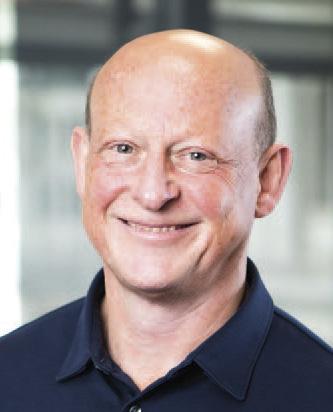
Spring, as a season, is often recognised as the time of new beginnings, renewal, and growth. So, I’d like to start by thanking all members for renewing their memberships this year and committing to the Society.
Keeping on the theme of new starts, I’d like to welcome the new President and Honorary Secretary, Robbie and Claire, and wish them the very best of success as they start their 3 year terms. At the same time, I would like to thank the previous incumbents Nikki and Simon for their enormous contribution to the Society over the past 3 years as well as for their wise and insightful counsel to me personally; the same can of course be said of Grant who remains as Treasurer for the coming year. One of the most enjoyable aspects of my role is working closely with the Executive Committee and wider Board of Trustees, who are always fully engaged in the business side of the charity and highly supportive of the BOS HQ team in general.
Turning to the latter, we have a number of newcomers joining us of late; including Jake as Bookkeeper and Gemma as Executive Secretary, who has replaced Ann Wright after her three decades of service to the charity. Together they make up a support team of five, which also includes Claire our Events Manager, Ann as Membership Secretary and Sarah our Finance Manager. In the next edition of the BOS News we will expand on the head office team to give readers further insight into everyone’s role and how they support the Society and the wider public at large.
It’s a very busy time of late for meetings, conferences and training. I was delighted to attend the PG Study Day in Stratford Upon Avon back in January, getting introduced to that group of the membership; we have the upcoming COG in Nottingham and OSG in London, both taking place in March. And again, I’d like to thank the organising committees for the huge amount of work they’ve put it in to making these events a success. Underpinning all of these formal
get-togethers are the commercial sponsors and developing our business relations with the trade will be a key focus for the BOS HQ team throughout the course of this year.
There are some who quite rightly challenge and probe further as to the size and cost of infrastructure required to support the BOS in its daily operations. Please be assured that between the finance team, the COO and Treasurer we constantly scrutinise each line item of income and expenditure to try and maxmise the former and minimise the latter. We continue to face the challenges of managing our finite resources, especially after several consecutive years where Society income has not exceeded expenditure. Arresting this situation has been my ongoing number one priority since I came into post; rather like an oil tanker looking to change course and direction, it does take time to do so. However, I feel momentum is with us now and the clear aim for 2025 is to break even. As such, a corresponding budget was presented to the trustees at the last board meeting in February in this regard for their approval.
The scope and ambitions of the Society remain widespread as the BOS seeks to fulfil its charitable aims, uphold its values and remain committed to its mission of being a champion for the advancement of the specialty through education, advocacy and research.
In terms of ongoing projects, research and grants, the BOSF is obligated to a forward spend of over £500k; in 2024 the annual spend was £95k. We should applaud this level of commitment, but such endeavour also requires the wider Society to focus on increasing ongoing fundraising and donations, which have averaged less than £12,000 per annum over the past
decade. Other trustees including our new Patron Roz and Peter as Directorate Head of Research make similar points in their respective columns. Enhancing our fundraising capabilities will be a continued theme for 2025 and I encourage all members to consider supporting the BOSF if you don’t already do so by visiting https://bos.org.uk/bosf-donations/
In other news, the BOS has settled in very well to its new home at the Royal College of Surgeons which adjoins the wide-open green spaces of Lincoln’s Inn Fields. It’s a vibrant and modern location as we share the open plan 4th floor with other similar medical charities and in the immediate locale there is the London School of Economics (LSE), so it’s always humming with student activity. As always, I do actively encourage any members who are passing by to drop in and see us.
Our old home on the ground and first floors at Bridewell Place has now been completely refurbished (at the tenant’s expense) by the law firm we leased the space out to back last September. The BOS of course retains ownership of the 980-year lease. I continue to work with the Board in reviewing our longer-term options including a potential sale of the commercial leasehold.
As mentioned in previous COO reports, the exterior and common parts of Bridewell Place have been
severely neglected over many years as no effective amount of money has been spent on regular upkeep. The cost of any future renovation works would be borne by the four leaseholders; though responsibility for organising the refurbishment and collecting the monies required through the service charge actually falls to the freeholder. A more recent independent report commissioned in January (2025) has now estimated the cost of necessary restorations could exceed £1.2M over the next 10 years. We have a meeting in March with the landlord, managing agent, surveyor and other leaseholders to discuss the ramifications and implications of this cost projection for the BOS.
So, readers will surmise there are both business challenges and opportunities facing the BOS. Again, I wish to emphasise that together the head office team and current Board are resolute and fully committed to addressing them for the longer-term benefit of the Society and its members.
If there is anything you would like to raise with me directly, please do email me on coo@bos.org.uk and I’d be delighted to answer any queries you might have; or please feel free to call or stop by the office for a chat.
Rupert Marks Chief Operating Officer














The British Orthodontic Society Conference (BOC) is the only UK event which brings together the entire orthodontic community. This year it takes place from Wednesday 24 to Friday 26 September. Hosted in the South West of the UK at the state-of-the art ICC in Wales for the first time, delegates can look forward to three days of thought-provoking presentations and discussion delivered by a diverse line-up of national and international experts covering a broad spectrum of progressive clinical topics related to the science and art of orthodontics.
Invited speakers who have already been announced include; Dr Bjorn Ludwig, Dr Jay Bowman, Dr Simon Littlewood, Dr Thor Henrikson, Dr Dietmar Zuran and Dr Richard Cousley.
The plenary platform agenda also stars inspiring keynote presentations by the Hugh Montgomery, Professor of Intensive Care Medicine at the forefront of gene research and a Dr Sophie Scott, Cognitive Neuroscientist and a comedian to boot. It is hoped that both will be making ‘meet and greet’ personal appearances during refreshment breaks.
In parallel, there will also be a practice development stream and simultaneous sessions for the Orthodontic National Group and clinic support staff. The Conference Studio Theatre will enable delegates to get up close and personal with speakers as part of interactive Q&A sessions and behind-the-scenes discussions.
Importantly, the Conference offers delegates an efficient and cost-effective way of accruing a whole year of
Continuing Professional Development Points thanks to its combination of in-person and hybrid learning. Sessions, once again, will run virtually for clinicians unable to attend in person.
The BOC is also the setting for the UK’s largest-ever Orthodontic Expo Fair, featuring next-generation treatment and practice workflow technologies and services for delegates. This is coupled with an inexhibition theatre which will play host to commercial presentations, demonstrations, product previews and clinical hints and tips. Wednesday morning will feature extended workshop sessions curated by the BOC’s commercial partners on a wide range of topics.
Specialist Orthodontist Dr. Guy Deeming, Chair of the BOC 2025 Committee elucidates: “Now more than ever, it’s an important as a Society and as a profession that we come together to celebrate all that is good, not only in orthodontics, but also in medicine. The 2025 Conference is an opportunity for the whole orthodontic community to come together and consolidate our profession so we’re able to weather any coming challenges both now and in the future. Past event feedback shows that the primary reasons for attending BOC is to learn, improve and network and we have all those bases covered … and some … at this year’s event.”
‘Welcome in the hillsides’: In addition to the educational aspects of the conference, there will also be ample of time for networking, forging alliances and socialising - which is equally important. Wednesday will bring delegates together for welcome drinks, while Thursday evening there will be a carnival party



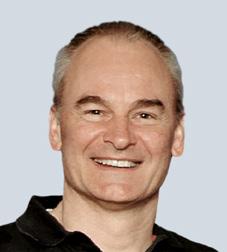
atmosphere with dancing and street food – all onsite and included in the ticket price.
Adds Dr. Deeming: “We have a fantastic array of top league speakers who are not regulars on the conference circuit, so I’d advise colleagues to secure their places now to take advantage of early bird rates - and perhaps organise their diaries to enable their clinic team to attend too as there is so much for everyone on the agenda. There will be a warm welcome in the hillsides - to borrow from the Welsh rugby anthem - and we can’t wait to meet up with colleagues old and new.”
A breath of fresh air: An hour and a half from London, the ICC is a world-class, purpose-built venue which can be easily reached. The venue can be accessed via a choice of road, rail or international air connections, no matter where you are from travelling from, either in the UK or further afield. There are plenty of excellent value hotels to choose from and for drivers, there is parking for 2,000 cars.
For visitors who like to get a breath of fresh air between conference sessions and networking, the ICC campus offers beautiful walks in its own woodland grounds. There is also an internationally renowned golf course and spa in the adjoining Celtic Manor and the destination location also a springboard to tag on a glorious weekend break in Wales.
For more information about the speaker line up and agenda, and to secure your Early Bird Tickets visit the Conference website https://bos.org.uk/boc2025/



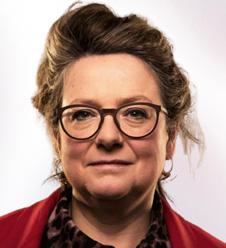

In this issue of BOS News Professor Chris Stephens OBE gives a short history of the BOS historical collection and Philip Benson, current Chair of the BOS Archive and Museum Committee explains the current situation and future plans for the collection.
The Orthodontic Museum and Library were established in 1908 when the British Society for the Study of Orthodontics (BSSO) was founded. The first Librarian was J.E. Spiller and the first Curator Hubert .C Visick (of the band forming pliers for those who are old enough to remember them). Visick had the unusual and rare distinction of being thrown off an early Edward Angle course in 1906 for asking questions.
Initially, there were few items in the collection. In 1912 Visick reported that he had only received one single donated item for the museum during the year, that of a plaster plane presented by Mr George Northcroft! Since then, under the care of successive BSSO librarians and curators and, more recently, the BOS Archive and Museum Committee, the number of items has increased to over three thousand items. These include valuable documents recording the lives of eminent people, as
well as the development of the specialty in the UK and the formation of the British Orthodontic Society. Prior to employing the expertise of a professional curator, the BOS collection was managed by members with little or no experience, leading to poor storage and classification, as well as loss of valuable items. The collection is now properly documented, stored and maintained, such that we are now an accepted member of the Medical Museums Association. This would not have been possible without the energetic, expert assistance of the professional curator Sophie Riches, who has worked with the BOS for over a decade. The collection continues to grow, with numerous donated items each year. In addition, the early paper records of both the BSSO and BOS are now safely stored in appropriate climate-controlled conditions, as part of the Wellcome Institute for the History of Medicine collection (see https://wellcomecollection.org/search/ works?query=British+Orthodontic+Society).
It had always been the intention of the BOS Board to make our collections searchable and readily accessible online but to-date this has not been possible. Even now our Museum and Archive webpages, put together by Sophie receive many thousands of hits a year.
In March 2024 the Archive and Museum was informed that the BOS Board had decided to move out of the Headquarters building in Bridewell Place and into a smaller (yet to be decided) space. Consequently, the BOS Museum and Collection would need to be moved into storage, for an initial period of 12 to 18 months. This would allow the Board to decide on a future location for the headquarters. Time to organise the move was very short, as an offer had been accepted to rent the space at Bridewell Place from June 2024. The BOS Curator Sophie Riches worked hard to obtain several quotes for moving and storage of the collection and this was successfully undertaken in May. The collection is now being looked after by a commercial company (Restore Green) experienced in moving and storing heritage and museum items. Most of the collection is in ambient storage, but the more delicate items, such as the Northcroft masks and rare books are in temperature-controlled storage.
Following the move, it was with great regret that Sophie informed the Board and the Archive and Museum Committee that she was resigning as the professional Curator role of managing and conserving the present collection and cataloguing and appropriately archiving any future donated items. She did agree to continue her secondary role of supporting the A&M Committee in undertaking specific projects, with funding approved by the Board.
Prior to be placed into storage all items in the BOS
Collection were photographed. This will allow the museum to be displayed online in a similar way to the London Fire Brigade Museum, which has also recently moved online (https://www.london-fire.gov.uk/ museum/). All the items in the collection are catalogued in a database called Modes. This current system has the disadvantage that it is only available on a single computer in the BOS office and is not accessible and searchable online. We hoping to migrate all the data to a different system, which for a small annual subscription fee, will make the data available for anyone to search online (https://info.ehive.com/).
Meanwhile the Archive and Museum Committee is proposing to go ahead with a small number of projects with the professional assistance of Sophie Riches. These include the oral history of the development and implementation of the Clinical Standards Advisory Group (CSAG) report on the treatment of patients with a cleft of the lip and/or palate (outlined in the previous issue of BOSNews - Autumn 2024). As well as a history of the first women in orthodontics, including examining, sorting and cataloguing items received from the orthodontist Lilah Clinch. A third project is an oral history involving orthodontic clinicians who worked in the Community Orthodontic Service.
Where the collection will eventually be housed is still under discussions between the Archive and Museum Committee and the BOS Board.
1 Peck S. The students of Edward Hartley Angle, the first specialist in orthodontics: a definitive compilation. Angle Orthod 2006,54(2): 74-76.
2 AGM Report, Transactions of the British Society for the Study of Orthodontics, 1912
If you are interested in assisting the museum and helping to preserve orthodontic heritage then please consider joining our team of Supporters of the Museum, who are a vital support to the work of the museum.
To register your interest, please contact the Chair of A&M archiveandmuseumcommittee@bos.org.uk
www.bos.org.uk
Facial nerve palsy significantly impacts physical and emotional well-being, causing symptoms like dysarthria and motor function loss. The SunnyBrook Facial Grading System (SBFGS) is more effective than other scales for assessing severity. Although advances in 3D motion capture technology have enhanced facial movement assessment, the reproducibility of SBFGS facial expressions needs further investigation for accurate treatment evaluation. No studies have assessed the reproducibility of these facial expressions.
Aim
To evaluate the reproducibility of SBFGS facial expressions over six months using 4D motion capture technology.
Method
A prospective longitudinal cohort study was conducted at Birmingham Dental Hospital with 20 healthy volunteers (10 males and 10 females). Participants were evaluated at baseline (T1) and six months later (T2). The study assessed the reproducibility of six facial expressions using 4D stereophotogrammetry.
Results
Reliability coefficients exceeded 90%. Snarl, pucker, maximum smile, and eyebrow lift were reproducible

based on Euclidean distances. Eye closed gentle and lower teeth show had significant differences but remained within 2.0mm. Decomposition into x, y, and z components showed no significant differences over 2.0mm. Lower teeth show and lip pucker were least reproducible, exceeding a 95% confidence interval of 3.0mm.
Conclusion
SBFGS facial expressions are reproducible within 2.0mm to 3.0mm over six months. Clinically, changes in facial movement must exceed 3.0mm to be considered significant. This study provides baseline data for assessing patients with facial palsy.
Anant Bakshi
I graduated from Cardiff University with an Honours degree. After carrying out various DCT jobs, I completed my competitive three-year orthodontic specialty training at Birmingham Dental Hospital and Royal Stoke University Hospital. During this period, I earned a Master's in Research from the University of Birmingham and was awarded the Intercollegiate Membership in Orthodontics from the Royal College of Surgeons of Edinburgh.
Currently, I am undergoing Consultant training at King’s College Hospital and Royal Surrey County Hospital, where I am gaining extensive experience in treating complex cases, including orthognathic surgery and cleft lip and palate.

Background
A. Bakshi1,2, B.S. Khambay2
1Kings College London, 2University of Birmingham


• Facial nerve palsy impacts both physical and emotional well-being, leading to dysarthria, motor function loss, and drooling.1 The SunnyBrook Facial Grading System (SBFGS) is a superior tool for assessing the severity of facial palsy compared to other scales, e.g., the House-Brackmann Scale, as it considers synkinesis.2 It is valid and reliable, even for less experienced clinicians.3,4
• Accurate diagnosis, and severity classification, of facial nerve palsy guides treatment plans, ranging from monitoring to surgical intervention.
• Advancements in technology, including 3D motion capture (4D) stereophotogrammetry (Figure 1), have improved the assessment of facial anatomy and movement, aiding in treatment planning and monitoring. However, the reproducibility of facial expressions in the SBFGS warrants further study to ensure accurate evaluation of treatment outcomes.
• Currently no study has been carried out assessing the reproducibility of the facial expressions used in the SBFGS.
Aim


Assess the reproducibility of facial expressions, 6 months apart (T1 and T2), used in the Sunnybrook Facial Grading System based on 4D facial motion capture technology.
Null Hypothesis


There is no statistically significant difference (p<0.05) in the Euclidian distance of each landmark for each facial expression between T1 and T2. Any differences of 2.0mm or above would be deemed clinically significant.
Method






20 fit & Well volunteers (10 Male & 10 Female), recruited from January 2021-April 2021



Time points, T1 (baseline) and T2 (6 months later)


Five SBFGS expressions were analysed in conjunction with an additional facial expression:
1.Eyebrow raise
2.Lip pucker
Results


• An error study showed coefficients of reliability over 90% with no systematic errors.



3.Snarl
4.Eyes closed gentle
5.Maximum smile with teeth together
6.Lower teeth show (additional facial expression)
The images were captured using a Di4DTM Pro (Figure 1). Landmarks were then placed and tracked using Di4DView (Figure 2)
Inclusion Criteria
Age 20-40 years
Willing to participate in the study
Can provide written consent
Exclusion Criteria
Diagnosed with oro-facial deformity
Diagnosed with oro-facial palsy
Diagnosed with craniofacial syndromes
Diagnosed with neurological condition affecting oro-facial movement
Have undergone cosmetic adjunctive procedures such as Botox or fillers.
• Snarl, pucker, maximum smile, and eyebrow lift were reproducible, whilst eye closed gentle and lower teeth show exhibited statistically significant differences in Euclidean distances between T1 and T2
• None of the differences in Euclidian distances were statistically significantly greater than 2.0mm for any facial expressions.
• Decomposition of Euclidean distances into x, y, and z components indicated no statistically significant mean absolute differences greater than 2.0mm.
• Lower teeth show and lip pucker displaying the least reproducibility. Both expressions exceeded a 95% confidence interval of 3.0mm.




• This novel study examined the reproducibility of facial expressions over six months, rather than the four weeks of previous studies. This extended duration reduced memory bias.
• The study has shown that with an interval of 6 months, the facial expressions used in the SunnyBrook Scale are reproducible to within 2.0mm - 3.0mm.
• Based on the Euclidian distances, the null hypothesis was rejected for eye closed gentle and lower teeth show.
• When looking at the x, y and z components, all of the facial expressions were reproducible.
• Clinically, changes in facial movement must exceed 3.0mm to be considered significant rather than attributable to reproducibility variation.
• This study also provides clinicians with baseline data of a control group for comparison, aiding in the assessment of patients with facial palsy.
References
1. Stew, B. and Williams, H. (2013) Modern management of facial palsy: a review of current literature. British Journal of General Practice, 63 (607): 109-110.
2. Ross, B.G., Fradet, G. and Nedzelski, J.M. (1996) Development of a sensitive clinical facial grading system. Otolaryngology Head and Neck Surgery, 114 (3): 380-386.
3. Hu, W., Ross, B. and Nedzelski, H. (2001) Reliability of the Sunnybrook facial grading system by novice users. Journal of Otolaryngology, 30 (4): 208-211.
4.
The British Orthodontic Society Foundation has been funding research for more than 25 years, promoting the study and practice of orthodontics, maintaining and improving professional standards and encouraging research and education in orthodontics.
These case studies below are examples of previous and current work that BOSF has supported with the help of BOS members, without which none of this is possible.

Consultant Orthodontist, Chesterfield Royal Hospital.
Effectiveness of 3 methods of anchorage reinforcement for maximum anchorage in adolescents: A 3-arm multicenter randomized clinical trial
Am J Orthod Dentofacial Orthop. 2014 Jul;146(1):10-20. doi: 10.1016/j.ajodo.2014.03.020
Jonathan Sandler 1, Alison Murray 2, Badri Thiruvenkatachari 3, Rodrigo Gutierrez 4, Paul Speight 5, Kevin O'Brien 6
This 3-arm parallel randomized clinical trial compared the effectiveness of temporary anchorage devices (TADs), Nance button palatal arches, and headgear for anchorage supplementation in cases that required maximum anchorage.
There was no difference in the effectiveness between the 3 groups in terms of anchorage support. There
were more problems with the headgear and Nance buttons than with the TADs. The quality of treatment was better with TADs. As a result, TADS might be the preferred method for reinforcing orthodontic anchorage in patients who need maximum anchorage.
"The BOSF support for our dual-centre RCT on TADs was absolutely invaluable. Alison and I couldn’t have done it without the both the finances and the encouragement to make this study happen. The study took five years for us to complete and enabled me to submit the work to the University of Sheffield for my PhD.
Following publication of the work in 2014, the research team were awarded the ‘David Turpin award’ for ‘the highest rated RCT published in the AJODO in that year’. I am therefore enormously grateful to the BOSF for making possible these milestones in my career.
I encourage all members of the BOS to support the valuable work of the BOSF and also to encourage all young researchers to submit applications for BOSF support. It really can make the difference!"
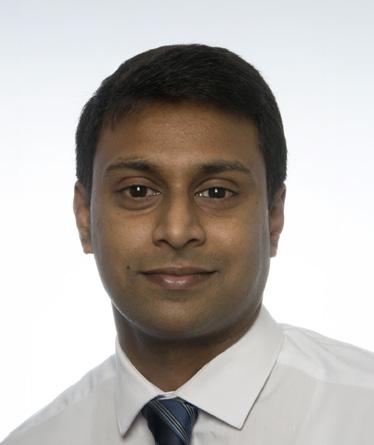


Removal handle feature to facilitate insertion and removal
Palatal coverage with thickness customized to suit each patient
Smooth lingual surface for patient comfort

1
Clinical Lecturer and Honorary Consultant in Orthodontics. School of Dentistry, University of Dundee
Fixed Versus Conventional Removable Twinblock For Overjet Reduction In Children - A Randomised Controlled Trial To Investigate The Burden
Sivamurthy, Gautham (Primary Investigator) McIntyre, Grant (Investigator) Mossey, Peter (Investigator)
This multicentre randomised clinical trial being carried out in Scotland is investigating the impact of correction of Class II division 1 malocclusions in adolescent participants, comparing removable and fixed versions of the Twinblock appliance.
"We are assessing not only the clinical hard and soft tissue impact, but also psychosocial and economic aspects of correcting proclined incisors in growing individuals. These are clinically valuable questions assessing not only impact of treatment, but also how difference in patient compliance could impact on treatment time, economic feasibility and treatment changes on the growing face.
BOSF have been fantastic in providing us the funding opportunity for the Phase 1 of this study and they have recently provided further funding until completion of the 2-phase treatment. Supporting the BOSF allows researchers like us to continue answering meaningful questions and help find techniques to deliver high quality and efficient care for our patients. We are very grateful for the opportunity and would like to thank BOSF again for their continued support."
Consultant Orthodontist, Tameside Hospital NHS Foundation Trust.
The effectiveness of bone anchored maxillary protraction (BAMP) in the management of class III skeletal malocclusion in children aged 11-14 years compared with an untreated control group: A multicentre two-arm parallel randomised controlled trial.
Nicky Mandall 1, Wesam Aleid 2, Richard Cousley 3, Edith Curran 1, Susi Caldwell 4, Andrew DiBiase 5, Fiona Dyer 6, Simon Littlewood 7, Spencer Nute 8, Sarah Jayne Campbell 9, Simon Atkins 10, Sherif Bayoumi 2, Vyomesh Bhatt 8, Paul Chambers 7, Nicholas Goodger 5, Claire Bates 1, Ovais Malik 11, David Waring 9, Paul Bassett 12
J Orthod . 2024 Sep;51(3):228-239. doi: 10.1177/14653125241255139. Epub 2024 Jun 6.
The skeletal class III improvement in ANB and the overjet change were sufficient to reduce the perceived
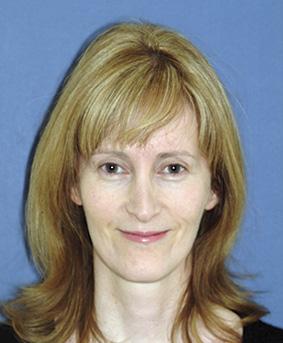
need for orthognathic surgery by 27% compared with the control group.
"Without the support of BOSF, the randomised clinical trials carried out by the Class III research team would not have taken place. As orthodontists interested in research and improving evidencebased practice, we appreciate the many years of BOSF support through the generous donations of BOS members. We have been enabled to carry out national multi centre RCT's, the results of which, we hope will influence clinical decision making in the future to provide our patients with the best care possible. Thank you."
www.bos.org.uk/Who-We-Are/Shop
www.bos.org.uk
Single-centre prospective randomised controlled twoperiod crossover trial in a UK secondary care hospital orthodontic department which investigated patient experience of comfort during intraoral scanning (IOS) versus alginate impressions in a UK orthodontic setting. Secondary aims assessed other patient/ operator factors influencing overall experience.
All new patients (≥10 years old) requiring impressions for orthodontic treatment were screened. Consented participants were randomised using a 1:1 ratio with mixed block sizes. Visual analogue scales (VAS) recorded participant and operator experiences following an alginate impression or IOS with Trios® 3 (3Shape) with a 4-week washout period. The procedure times and operator preference were recorded.
84 of 86 participants completed the study. IOS was found to be more comfortable (p=0.006), despite taking, on average, 2 minutes longer (p<0.00005). Participants experienced less nausea/coughing with IOS (p=0.0213); confirmed by operator scores (p<0.00005). Participants would recommend IOS (p=0.0146), although 3 of the 4 operators preferred impressions. There was no difference in ease of procedure (p=0.0817) or operator confidence (p=0.1347).
Overall, IOS was found to be more comfortable for the patients in this setting; limited by potential performance bias, Hawthorne effect and confounders. The secondary comparisons should be considered cautiously as these were not powered for; however,

they provide insight into overall experiences and can be used to generate future hypotheses.
"The funding kindly provided by the BOSF meant this research was able to materialise from an initial idea. The review process was fair and useful as a trainee to experience. The funding allowed for the necessary materials required for the study as well as ensuring I was able to fund the randomisation software, which was essential to maintaining allocation concealment and therefore reducing bias. Additionally, the funding also allowed me to work with a statistician to ensure the statistical analysis plan was appropriate from the outset, maintaining the integrity of the trial. Recieving the funding removed a huge barrier for me in terms of carrying out a clinical trial, which initially I felt was very daunting and unachievable. The BOSF were extremely supportive throughout the stages of set up through to trial completion and I am truly grateful for their faith in me as a young researcher and the trial objectives."

LearnfromtheUK'slargest groupofOrthodontic Nurses,Therapists, PracticeManagersand TreatmentCo-ordinators.
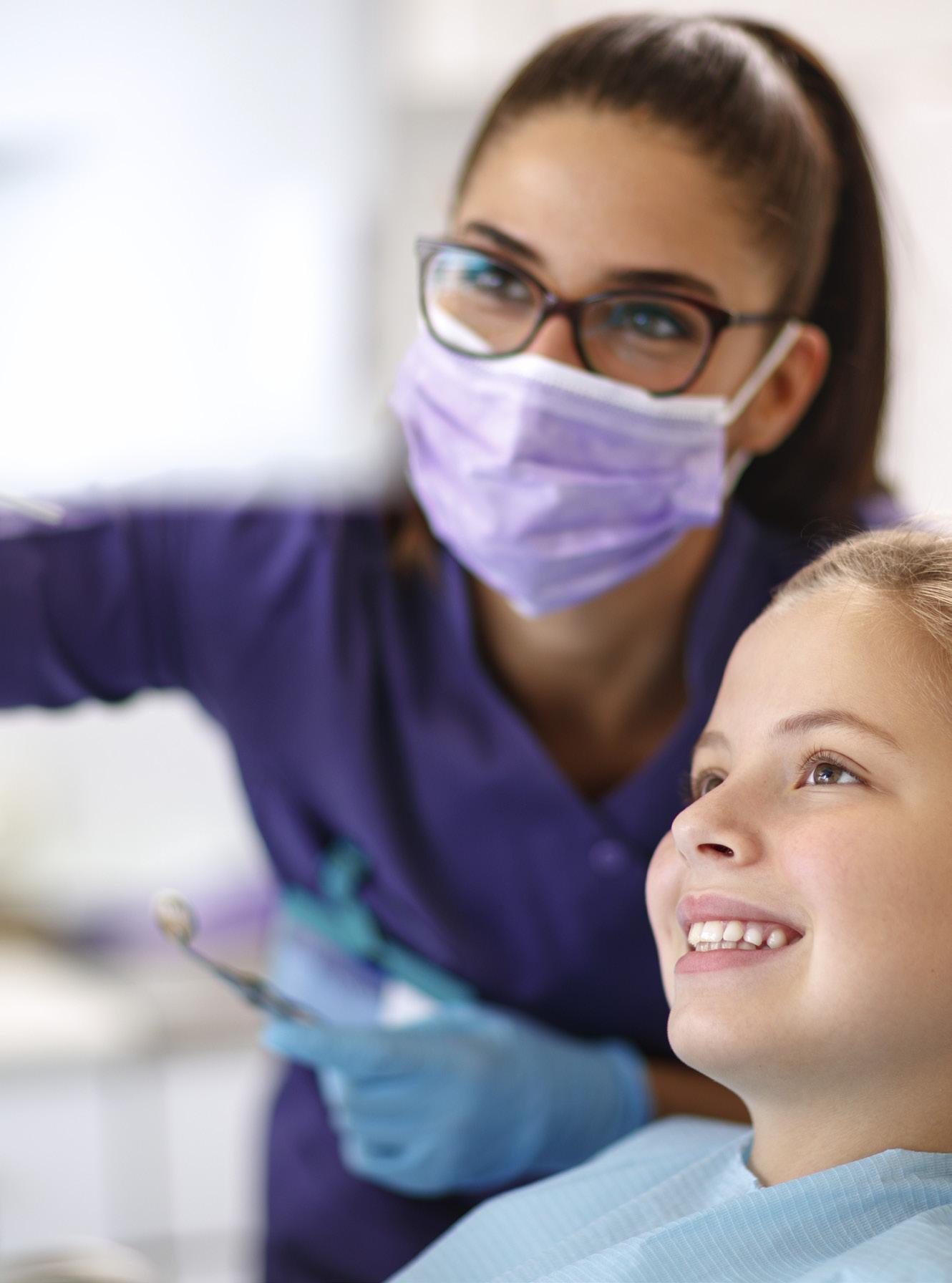
Jointodayandenjoy...
•arangeofexclusive benefits,includingaccess tocontinuingeducation opportunities
•discountedratesfor eventsandconferences
•connectingwithyour peers,andexchanging experiencesandnews
•stayingup-to-datewith thelatestindustry developments
Becomeamemberat orthodontic-ong.org


I so appreciated all the gifts and messages on my retirement. Thank you all.
It has been a real pleasure to work firstly for the BSSO and BAO and subsequently for the BOS and to have had so much contact and involvement with members, meeting many when attending and working at BOS meetings including the BOC.
I have many happy memories of my time. I think back to when I first joined the BSSO and had the privilege of working with Elizabeth Horrocks and the late John Williams. Those members I have worked closely with will no doubt remember that I often said “what would John Williams have done?” such is the regard I still hold him in. I remember so well working with Laurence Usiskin who died so suddenly and sadly and who is remembered with the Laurence Usiskin Elective Prize.
Lunch at the Royal Society of Medicine with the late Jeffery Rose, first President of the BOS, was a highlight of the month for me. He was a wonderful man who supported me during a tragic event in my life and I have never forgotten his very wise counsel which helped me so much.
There have been many Chairs/Presidents/Treasurers/ Committee Chairs since 1994 with and for whom I have very happily worked, and who have devoted countless
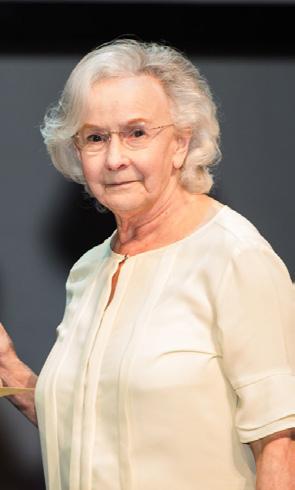
hours of work to the Society. I have worked especially closely over the years with Dr Allan Thom, Dr Ken Lumsden, Dr James Spencer, Professor Sue Cunningham, Dr Joe Noar, Professor Jonathan Sandler and Professor Nigel Hunt and I would like to publicly thank them for the confidence they showed in me during their time in office. I must also acknowledge the late Chris Kettler with whom I worked at the BAO and then the BOS.
A member once said to me that when he retired, he did not know how he found time to go to work; I am pleased to say that I too am finding that, with so many things competing for my time. I truly hope life carries on that way!
Thank you all so much for your very kind messages and good wishes.
Ann Wright


As we mark International Women’s Day, it is only fitting to highlight the remarkable contributions of Karen Juggins, Consultant Orthodontist at Royal Stoke University Hospital. Her pioneering work in orthodontics and dental health has left an indelible mark on both local and national initiatives, demonstrating the power of innovative healthcare engagement.
Karen was the driving force behind the ‘KeepStokeSmiling’ campaign, a local initiative that has since evolved into the national ‘KeepBritainSmiling’ movement. Endorsed by the Royal College of Surgeons of England, the British Dental Association (BDA), and the British Orthodontic Society (BOS), this social medialed campaign delivers oral health messages in a uniquely engaging way. Rather than relying solely on traditional NHS content, the campaign incorporates contributions from patients, students, community groups, and sports teams, making it a grassroots movement that resonates widely.
A testament to Karen’s forward-thinking approach, Stoke City Football Club became involved, leading to an extensive outreach programme. Partnering with the hospital charity, the initiative has delivered dental health workshops to over 12,000 primary school children. This outstanding project won the English Football League Community Project of the Season 2023, earning a commendation from the House of Commons.
Following this success, the Premier League Charity developed a dental health resource for football clubs, freely available via Premier League Primary Stars. Clubs such as Manchester United (with Hanieh Javidi, Steve Chadwick and Pam Gill), Arsenal (with Shruti Patel), and Burton Albion (with Anjli Patel) have since implemented similar workshops, with Dundee United (with Peter Mossey) and Liverpool (with Jayne Harrison and Sondos Albadri) set to follow. Karen’s vision of using football as a vehicle for dental health education is groundbreaking, illustrating how healthcare professionals can leverage positive marketing to drive behavioural change.
Karen’s contributions have not gone unnoticed. She has received numerous accolades, including:
● Colyer Gold Medal (Royal College of Surgeons of England, 2022)
● Dentistry Top 50 (2024)
● BOS Distinction Award (2024)
● BDA Award for Excellence (2025)
● Fellowship ad hominem (Royal College of Surgeons of Edinburgh, 2025)
Ever the team player, Karen attributes the success of the initiative to the fantastic support of her colleagues, including fellow consultant orthodontists John Scholey, Rehan Ullah, Louise Mangnall, and Yatisha Patel; Orthodontic Therapists Tammy Morris and Vanessa Parsonage; Orthodontic Nurses Anita Curley, Fiona Manley, Rebecca Meredith, who have all made huge contributions to the project since it started in 2018. It is fair to say that everyone in the department - nurses, healthcare assistants, secretaries, receptionists, managers, laboratory technicians have at some point, played their part. The project has also been exceptionally well supported by UHNM Trust and Charity, Stoke City Football Club Community Trust, dental practitioners and specialist orthodontists, NSCG College, and the local LDN and MCN. Local businesses have also played a significant role, contributing to the project’s success. It is this ability to reach an entire community in all its diversity, whether vulnerable or otherwise, that engages people and inspires change, demonstrating the power of collective action in improving public health.
Karen also credits huge thanks to Orthocare and DB Orthodontics for their continued support of both the KeepStokeSmiling and KeepBritainSmiling campaigns. Their commitment to improving the nation’s dental health is truly invaluable, demonstrating how the dental trade and clinicians can work together on meaningful projects. It’s fantastic to see such strong partnerships making a real difference in promoting better oral health. We truly appreciate their dedication and ongoing collaboration
Karen Juggins’ innovative leadership has reshaped dental public health messaging, showing that creative partnerships can make a real difference in public health. Her legacy will continue to inspire both her peers and future generations in dentistry and beyond.
There are now 18 different KeepSmiling groups up and down the country and it’s continuing to grow. If you would like to get involved in the KeepBritainSmiling campaign simply head to the BOS website, click on ‘KeepBritainSmiling,’ and you'll find all the resources you need to launch a project in your area!

In May 2024, the 15th annual British Dental Association (BDA) Honours and Awards ceremony took place at the BDA, Wimpole Street, London. The Honours and Awards are designed to celebrate those who have provided outstanding merit and service to their profession, representing their colleagues or contributing personal time and effort, not only for the BDA but also for the profession more widely.
The unsung heroes of the profession were celebrated, who help to uphold and improve standards of dentistry. The work of individuals who have gone above and beyond were highlighted, who go the extra mile and help further the dental profession.
Nadia Ahmed (Consultant and Specialist Orthodontist in South Yorkshire) was awarded a Certificate of Merit for Services to the Profession. She has served on a number of committees to support her colleagues, including her current role as Secretary to the BOS Orthodontic Specialist Group (OSG), past Treasurer of the BOS Training Grades Group, past OSG representative on the Clinical Governance committee, Executive Sub-Committee member of the BDA Central Committee for Hospital Dental Services (CCHDS) and
first female Chair of the BDA CCHDS. Nadia has shown dedication and commitment in her professional roles and as an educator, with a passion to support dentists in the early stages of their career. During her time as Chair of the BDA CCHDS from 2022-2024, she led a number of initiatives for young dentists and dental students to understand career options in hospital dentistry, including a webinar series covering all hospital specialties and she led on the hospital dentistry section of the BDA careers guide. As chair, she supported members through the challenging period of industrial action for all hospital grades across the home nations.
We would like to congratulate Nadia on her achievement and efforts for the dental profession.
There are Orthognathic teams all around the UK working with the same ethos to improve patient function and wellbeing. Multidisciplinary clinics are undertaken weekly with both Consultant Maxillofacial surgeons, Orthodontists, trainees and nurses. A recent questionnaire study has highlighted the national variation in acceptance criteria, support services, records and data collected for these patients. A designated orthognathic specialist nurse may help overcome some of these issues.

Around 2016 the Eastbourne OMFU Department was asked to merge and centralise some of its surgical and on call activity with the hub and spoke centre based at the QVH hospital in East Grinstead. Other regional units such as Brighton and Medway hospital were also involved. With the new cross site working for orthognathic patients, it was felt that a role was needed to be developed within the nursing team at Eastbourne like other specialist nurse roles within the hospital services to better support and streamline the care of orthognathic patients across sites.
Dental nurses are often the overlooked heroes on MDT clinics but can offer game changing care and their skills can be utilised to fill the gap in support services and essential data collection.
The team at ESHT developed a band 6 nursing role for this with extra responsibilities and an in-house nurse was trained and given the title of Orthognathic specialist nurse - this was beneficial and a lifeline for orthognathic patients during covid as they already had a point of contact. In 2022 the post became vacant and was advertised. Julie then became the first officially appointed nurse in the country to be employed in this specific role.

I am here to look after patients and carers, I often find I’m looking after the whole family not just the patient. At the initial visit with the Orthodontic Consultant the patients are given a lot of information, sometimes they are expecting the information and other times it can be a surprise as often I find patients get information fade, where they cannot take it all on board.
Orthognathic patients are booked in with me where we go over the information. I will ask them to recount their previous appointment, and fill in the information they are missing and answer any questions they might have. It is an informal setting, helping to put them at ease, which often ends in the patients opening up to me about their worries or problems and personal information even if it is to decline going any further.
We will then fill out the Epworth and Psychology Forms, we use these to help us to get to know them better, do they have support at home, do they need extra support and sometimes we may refer to our Psychologist at Queen Victoria Hospital in East Grinstead. Like most units it is difficult to have a psychologist on MDT clinics so our psychologist advised the team to use 2 screening tools: Core 10 and the
Appearance anxiety inventory – from the scores its then decided by the consultants if a patient would further benefit from 1:1 psychological support.
I record their Height, Weight and BMI and basic Oral Hygiene Instructions are given. Information gathering 1:1 with me prior to the MDT helps the team and the patient focus on talking through the treatment rather than being bombarded with forms on the day of the MDT.
I give a new patient information folder with a QR code to the British Orthodontic Society which shows step by step videos of the Orthognathic journey, their homework is to watch the videos and compile a list of questions they would like answered.
An information leaflet to explain the Joint Clinic (MDT) is given and I then go through it with them step by step. As they enter the room they will find a lot of people, Maxillofacial Surgeons, Orthodontic Consultant, Registrar, sometimes a junior trainee, myself and another nurse. Prior to the Joint Clinic I check all the records; study models, X-rays and photos are taken. Patients also are given an email contact which I respond to.
The Surgeon will introduce themselves and the other people in the room. Reasonable adjustments can be flagged by me prior particularly for neurodiverse patients if it is too uncomfortable to have so many new faces or if a longer appointment time slot is needed.
The team will then ask the patient a few simple questions to find out what their concerns and needs are. We will do specific measurements and I fill out our electronic minimum data collection forms which are in the Electronic Patient Record (EPR). The clinicians discuss their individual case, then explain everything, if teeth need to be removed, if you would like to go ahead or need more time.
Once the patients have started orthodontic treatment, I am always a point of contact for any concerns. As they approach their second joint clinic for a date for surgery (usually 18 months into treatment), I ensure the presurgical records are updated by the treating Orthodontist and at the date appointment try to ensure the patient is given an operation date up to 3 months ahead in time for a GIRFT recommendation. Often, I

find the patient may delay as they have holidays, work or university commitments.
When I am not in clinic, behind the scenes, I filter emails sort out problems, check scans have been done – particularly if the surgeons have requested 3D Planning and liaise with the lab to book patients in for their work up appointments and make sure the lab work is back, and courier is booked as our lab is off site.
Nearer the Operation date I will organise a series of appointments:
● Facebow/Imps (Orthodontist) or 3D Digital scan (Surgeon)
● Planning (MDT Orthodontist and Surgeon)
● Try wafers (MDT Orthodontist and Surgeon)
● Orthognathic Nurse Led Clinic Post Op Instructions
● Post Op x 2 (MDT Orthodontist and Surgeon)
● 6 Week Post Op (Orthodontics)
I will liaise with the lab to get the patient booked into their schedule. I then send out an appointment card with clear instructions of what the appointments mean and to contact me if there are any problems. In my Nurse Led Post Op Clinic I will go through a lot of information and give out patient leaflets to support this.
Three times a year regional meetings are held by the tertiary surgical centre QVH in East Grinstead. I have felt a valued member of the team attending these meetings particularly as it is a GIRFT recommendation. We discuss the good, the bad and the ugly from the PROMS and the teams strive to keep high standards. We particularly deep dive and look at when things have not gone well so all units can learn and advise what they would change to do better.
The team am more than happy to help any units to set this role up so if you require any further information regarding this, please send me an email at ESHT.yourjawsurgery@nhs.net
1 Brannen S, Rolland, Calla A, Vernazza CR and (2023) Characteristics of orthognathic multidisciplinary team clinics in England. Part 1: A questionnaire survey. Journal of Orthodontics 50:287-295.
2 Paul NR and Rolland SL (2023) Characteristics of orthognathic multidisciplinary team clinics in England. Part 2: A qualitative study. Journal of orthodontics 50: 294-300.
3 Hospital Dentistry - Getting It Right First Time – GIRFT
Once a year since 2018 we run our successful Jaw surgery evening where prospective patients are invited to hear the team and meet treated patients. 3 months prior I start to arrange the patient evening.

– Staffordshire January 2025
Conducted as part of Local Dental Network- LDN
Dr Shamaila Javaid
Specialist Orthodontist – Midlands and London Specialty Doctor in Orthodontics – Eastman Dental Hospital, London
Ectopic canines are often one of the most challenging cases to treat as the aetiology is still unclear and the treatment is time sensitive. The practitioners –both GDPs and Orthodontist – should suspect a maxillary canine to be impacted if it is not palpable by 10-11 years of age and correlate it to other clinical findings and confirm diagnosis with radiographic examination by either a periapical radiograph or an Orthopantogram (OPG). Only 20% of the onethird children needing treatment get the interceptive treatment, which makes the impacted canine cases more difficult to treat resulting in losing the canine tooth as part of orthodontic extractions instead of a premolar in a crowding case or leaving the retained deciduous canine in situ and extracting the permanent canine due to unfavourable positioning. Not all canines are straight forward but with careful and timely diagnosis, the incidence of correction of impacted canines can definitely increase.
Audits were done in the region by the local Managed Clinical Network (MCN) and the average referral age for impacted canines was 14 years which is quite late and causes higher risk of root resorption of adjacent teeth, larger displacement of the tooth from its normal position, longer treatment time, greater morbidity and burnt compliance of the patient and greater load on the NHS.
The LDN – Local Dental Network NHS England Midlands has been taking the initiative to support the local GDPs by equipping them with knowledge to make better decisions. Courses have been organised in Shropshire and Staffordshire by the LDN chair for Staffordshire & Shropshire NHS England Midlands, Mr Tony Ahmed, who has been a great person to work with, and is very passionate towards advancing the delivery of high-quality orthodontic services across the region. The canine awareness course for practitioners

in Staffordshire was conducted in January 2025 at the Stafford postgraduate centre and another one is planned to take place in June in Shropshire. The course was attended by 20 delegates.
The aims and objectives of the course were as follows:
● Explain the normal development and eruption pathway of maxillary canines
● Identify whether unerupted maxillary canines are impacted
● Be able to recognise situations in which interceptive treatment may be appropriate
● Understand when to refer patients with impacted maxillary canines for orthodontic assessment at the most appropriate time
● The possible consequences of failure to diagnose impacted canines
The course covered GDC Development outcome: A, C, D and attendees were awarded 2 hours CPD.
The goal was on completion of this course, the practitioners would have gained the skills to confidently diagnose and refer patients with impacted maxillary canines and to provide an overview of options for management of this common condition. Triaging patients appropriately plays a major role in the provision of orthodontics on the NHS, ensuring to diagnose and refer in a timely fashion either to primary care orthodontist or secondary care depending on complexity of the case.
The course was very well received and got excellent feedback. The delegates found the examples of clinical
cases most useful which stimulated the decision making along with academic knowledge.
Lastly, I would like to thank the LDN Staffordshire & Shropshire NHS England for providing me with the opportunity to share my clinical experience with peers and colleagues. It was an interactive session and
was interesting to learn what challenges the GDPs may encounter making the referrals for the impacted canines. It can be very useful for GDPs to have access to Specialist Orthodontists where there is doubt about either extracting a retained deciduous canine or triaging, together we can make the change and work towards better patient management.

1 -The UR3 on the OPG is not favourable for expose and bond and was therefore extracted.

2 – A late referral (patient aged 15) with 4 impacted permanent canines and untreated dental pathology
After many years of unfaltering commitment and exceptional service, our colleague David Slattery has recently retired from his role with Frimley Health NHS Foundation Trust. David’s retirement marks the end of an era, and while we wish him all the very best, he will undoubtedly be missed by colleagues, patients, and the wider orthodontic community
Geetanjali Sharma
The prospect of retirement opens new horizons, and having just finished after 35 years as a regional consultant, there is much to reflect on over a lifelong career.
It was back in 1978 in Manchester that my initial interest sparked when I signed up for a final year elective in this seemingly elusive subject. One typodont using ripple brackets, attending clinics at two peripheral hospitals, all sorts of pliers and rows of study models hooked my interest. Just how did they do that? The prospect of treating the shifting sands

of a developing malocclusion seemed very intriguing. Back then the main hurdle to the registrar grade and prospect of specialty training beyond was obtaining the Fellowship in Dental Surgery. This consisted of two parts each having a fearsomely low pass rate, but with perseverance and an element of good fortune this was achieved just before embarking on the then two year post graduate course at the Eastman Dental Hospital in 1982. There was no National Recruitment then, and a place was awarded following a visit that included a detailed discussion with the Professor. I am probably one of a dwindling band who can remember starting in the “orthodontic hut” up on top of the roof. It was a marvellous course completed at a time that could now be regarded as towards the end of that golden age of wire bending before everything became preadjusted. Having gained the MSc. and DOrth. four years as a senior registrar beckoned on a rotational post between Kingston, Roehampton and the Eastman, where I received a first rate training under truly inspirational trainers. There was no exit ISFE, and completion was certified by accreditation based on gaining satisfactory reports. This was during the later 1980s when the MOrth. was first introduced and trainees were recommended to obtain this in tandem.
Nearly ten years after graduation, probably longer than nowadays, I was in a position to seek a consultant post. This could be an unpredictable time, just as now, and among other things there would likely be a need to relocate. However, the consultant post has always had much to aspire to, and then there were the mooted extras. Some places still had consultant dining rooms and there was even time to use them, and others were rumoured to have named parking spaces!
After a number of attempts, I was very grateful to be appointed in East Berkshire on behalf of the then
Oxford RHA as Hospital Trusts had not yet come into being. These occasions often included an invitation to have lunch with the panel beforehand as by way of a social icebreaker. I now had my own patch based in Slough, Windsor and Ascot. My letter of appointment was only a page long, but did come with a large folder of regulations to explain a fulltime appointment meant substantially the whole of the working week. There were no formal job plans, so seven/eight clinical sessions meant plenty of time to develop those consultant interests. There were shared facilities with OMFS, full secretarial support and an onsite laboratory, plus several supporting sessions.
What was not to like? Well as it turned out the associate specialist retired, the commuting and the car parking, because I happened to work three split days. Although I was effectively a single-handed consultant, something I likened to being a kingdom of one, and would remain so for nearly twenty years, I was not alone. The then Regional Committee for Hospital Dental Services provided plenty of sound guidance in my formative years until the Regions were abolished in 1996. By this stage specialties were holding the equivalent of our present clinical governance sessions, that also provided a forum for presentations and topical debate. Significant milestones along the way have included gaining Trust status in the mid 1990’s, mandatory appraisals around 2001, and the new contract from 2003 that encompassed the annual job plan down to the last five minutes. It was also about this time that computers began to feature in clinics, and email first started in earnest. A particular gain was the appointment of a second consultant, and it has been really beneficial to introduce a colleague, not only to share some of the clinical duties, but to develop different interests and bring new perspectives. Topping it all more recently in 2022 our Trust decided to go paperless and introduce an electronic patient record system, which has had a steep learning curve all of its own. The pattern of referrals has ebbed a little across the years. To begin with there were few specialist practices, and fixed appliances were not readily available in primary care so most referrals were made by established GDPs for treatment plans and guidance. Nowadays, this balance has changed completely with fewer referrals overall coming from an increased number of specialists, but as complex cases that require in house treatment. The introduction of IOTN, and a buoyant Local Orthodontic Committee able to liaise with the regional Managed Clinical Network have helped cement today’s referral pathways. Additionally, I recognized the benefits early on of having combined clinics with OMFS. In similar vein the CSAG report heralded streamlined care for our cleft lip/palate patients, and we gained a hub and spoke arrangement centrally based from Oxford. All clinicians are keen on gadgets, and our nuts and bolts have improved no end over the years. Initially, very little came out of sealed packets, arch wires
often had to be rolled by hand resulting in finger pads like a violinist, and brackets had either curved or flat bases. Much of this changed with the rise of the preadjusted systems, and modern brackets are icons of miniature engineering. The use of headgear has waned and that of TADs has come to the fore. Current day cross infection has rightly evolved with CSSDs being the norm, and having all kits double wrapped and sealed some treatment sessions can take on the air of an early Christmas. Back in the day it was the autoclave bubbling away in the utility room often delivering hot pliers in busy times. Gloves were rarely worn out of surgery, and when first introduced, the pair provided had to last the entire session until proper disposables were developed and became universally available. The fallout from Covid 19 has also left its shadow.
There have also been opportunities to put something back, usually through postgraduate and committee duties. I was fortunate to be offered a share in a registrar training post early on, and many have been the engaging conversations on treatment planning and unseen cases over the years with a succession of very able trainees. There is no doubt trainees keep you on your toes and the critical faculty ticking over. As post graduate training became more formalised there were new responsibilities at the local Deanery with the inception of the RITA process from the late 1990’s right through to the ARCP system of today. Furthermore, I was particularly privileged to serve terms as a regional and then specialty advisor for the Faculty at the College. Part of this important role was to help maintain the specialty presence on interview committees, which were always a pleasure to attend. More recently and having taken part at the beginning of National Recruitment I was able to join the working party for a term as one of our COG members. This was a real highlight, and the proceedings undertaken in Newcastle were a beacon of logistical planning by their area team. Although this had to migrate on line as a consequence of Covid 19, I demitted in no doubt that the future of the specialty would be assured with so many capable candidates coming forward.
The one consistent throughout this time has been the BOS, and in particular the COG with its expert advice and superb annual symposium. Long may this continue! I have seen and been involved in many changes over the years, most of them for the good. I have also learnt many things, but that above all it remains a privilege to treat our patients, and orthodontics does make a difference.
I would certainly recommend all this to any junior colleague so inclined. I have had a great career in a fascinating specialty and worked with truly excellent colleagues…even if I never got that parking space!
David A Slattery
Ensure that you don't miss out on all the benefits that being a member of the British Orthodontic Society brings. As well as being part of the largest specialist dental group in the UK and the opportunity to network with like-minded colleagues, you can also take advantage of:
• Membership tailored for you whether you’re a Consultant, Specialist, Dentist, Academic or Post Graduate – there’s a group for you
• Access to BOS members' area of website and Virtual Learning Environment (VLE)
• FREE Subscription to Orthodontic Update - worth £92.00
• FREE ProDental CPD access to mandatory topics
• Discounted rates for British Orthodontic Conference and BOS group meetings
• Legal Helpline with 30 minutes of free legal advice
• A wide variety of educational courses
• Journal of Orthodontics
• Clinical Effectiveness Bulletin
• BOS News
British Orthodontic Society, Royal College of Surgeons of England 38-43 Lincoln’s Inn Fields, London WC2A 3PE
Tel: 020 7353 8680
The Invisalign Palatal Expander System is a contemporary new and innovative direct 3D-printed device based on proprietary and patented technology. Invisalign Palatal Expanders are intended for use in rapid expansion and subsequent holding of skeletal and/or dental narrow maxilla (upper jaw) with primary, mixed, or permanent dentition during treatment of patients.
The system consists of a series of removable devices staged in small increments of movement to expand a patient’s narrow maxilla to a position determined by their treating doctor. Each direct 3D printed device is customised to the patient’s unique anatomy based on an iTero™ intraoral digital scan. A palatal expansion treatment plan and device design are then developed using Align’s proprietary orthodontic software.

With Invisalign First™ aligners and Invisalign Palatal Expanders, Align Technology can provide doctors with a full early intervention treatment solution for Phase 1 treatment, an early interceptive orthodontic treatment for young patients.
For more information, please visit https://www.invisalign.co.uk/ortho/invisalign-palatal-expander
The ONLY event bringing together the UK’s orthodontic community under one roof – 24th to 26th September 2025
The three days of thought-provoking presentations and discussion will be delivered by a diverse line-up of national and international experts covering a broad spectrum of progressive clinical topics related to the science and art of orthodontics. Invited speakers include: Dr Bjorn Ludwig, Dr Jay Bowman, Dr Simon Littlewood, Dr Thor Henrikson, Dr Dietmar Zuran and Dr Richard Cousley.












The plenary stage also stars inspiring keynote presentations by the Hugh Montgomery, Professor of Intensive Care Medicine at the forefront of gene research and Dr Sophie Scott, Cognitive Neuroscientist and a comedian to boot. It is hoped that both will be making ‘meet and greet’ personal appearances during refreshment breaks.
The full agenda, as well as information about the stunning Welsh location, social programme, registration details and much more are available on https://bos.org.uk/boc2025/







The Education Committee have continued to deliver several educational activities during the Autumn and Winter months.
In November, a webinar was delivered by Professor Martyn Cobourne (Chair of the SAC in Orthodontics) to provide an overview of the new Orthodontic Speciality Curriculum which went live in Autumn 2024, for the new intake of year 1 Orthodontic Specialty Registrars. The target audience was orthodontic speciality registrars, clinicians who are involved in StR training and for delegates who have an interest in training. The webinar provided an overview of the new curriculum, updates of the changes to the Royal College orthodontic speciality assessment and description of the workbased assessments which are required to be completed during training.
In December, the PAR and IOTN courses were held at the Royal College of Surgeons of England in London and a two-day virtual advance critical appraisal course for orthodontic post-CCSTs in preparation for their ISFE past A assessment.
During January and February, two level 1 CBCT courses were delivered in conjunction with the British Society of Dental and Maxillo-facial Radiology. At the end of January, a level 2A course was held in Manchester and there were two level 2A courses held at the Royal College of Surgeons of England in London on the 28th February and 1st March. The level 2A course is a face-to-face practical workshop delivered by consultants in Dental and Maxillofacial Radiology to train the delegate in the justification and interpretation of CBCT scans. In due course, the Education Committee are planning for 2025 the asynchronous level 2B CBCT orthodontic specific courses in conjunction with the British Society of Dental and Maxillo-facial Radiology for those who have completed the level 2A training. This bespoke virtual training programme equips the clinician with the training required in dental CBCT interpretation and reporting. A key feature of this training is the development of the extremely useful skill of image manipulation to orientate the images which is invaluable in the clinical setting to inform, orientate and educate patients and carers about their condition. Previous level 2B courses have received extremely positive feedback from delegates who have completed the course. This programme is designed to enable the learner to pace their training at a time of their choosing which is facilitated by a Dental and Maxillo-facial radiologist.
Please see the upcoming BOS Courses and Educational Events Calendar for those courses which shall be delivered in the next few months, with the Education Committee in the process of planning further courses for 2025.
If you have any queries about education matters or have suggestions for future courses that could be delivered by the committee, please email on education@bos.org.uk.
Hemendra Shah Director of Education
Please visit www.bos.org.uk for more information or to book a place on one of our courses
23rd May 2025 National Orthodontic Therapy Study Day
The ever-popular annual OT training day returns, and this year will once again be available in a hybrid format, meaning delegates can attend in person or virtually. Hybrid: Face-to-face attendance at ManDec, Manchester or virtual attendance.
24th – 26th
September 2025 BOC 2025
Further details to follow.
Face-to-face: International Convention Centre Wales.
21st November 2025 Advances in Dentistry
This popular study day returns for 2025 to share the latest advances from other dental specialties. Further details to follow.
Face-to-face: Royal College of Surgeons of England, London.
CPD on the BOS VLE for all members
● NEW! Shared decision-making module – 2 hours of CPD available
● Risk management situational judgement tests – 4 hours of CPD available Login to www.bosvle.org.uk to complete the learning packages and obtain your CPD
National Orthodontic Programme for specialty trainees
Please contact your Training Programme Director to gain access to this valuable resource available at www.bosvle.org.uk, which includes full coverage of the ST1-3 curriculum.
Fluoride varnish application training on the BOS VLE
A virtual training package for DCPs who wish to extend their scope of practice to include application of fluoride varnish to patients undergoing orthodontic treatment.
Log in to www.bosvle.org.uk to view the training video and download the training materials.
CPD for DCPs
There are four CPD modules available online for orthodontic therapists:
● Cephalometry (3 hours CPD)
● Management of orthodontic emergencies (2 hours CPD)
● Brackets and bracket prescriptions (2 hours CPD)
● Assessment of the orthodontic patient (2 hours CPD)
Log in to www.bosvle.org.uk to undertake the CPD
Prodental CPD
Complete all your core CPD online for FREE!
Available free of charge to all BOS and ONG members. To request access, please email executivesec@bos.org.uk
Digitutor
An online package designed to help develop skills in identification of common cephalometric points. A great resource for those learning the practical skills of cephalometric assessment. Available at www.bos.org.uk

VAT on aligners and orthodontic appliances.
Align supplies Invisalign clear aligners and has always treated them as VAT-exempt under group 7 of schedule 9 of the Value Added Tax Act 1994, on the basis that they are “dental prostheses”. This interpretation had its basis in a statement found in HMRC’s published guidance, which stated that orthodontic appliances are exempt.
HMRC wrote to Align on 9 June 2023 stating that, in its view, aligners are not entitled to the exemption because Align does not provide orthodontic services.
In response to the letter, Align wrote to HMRC informing them of their intention to bring judicial review proceedings against the decision that their aligners are not exempt from VAT.
That claim was issued in December 2023, and the necessary permission to bring the case was given by the high court in February 2024.
On 15th February 2024, HMRC updated its guidance document “Health professionals and pharmaceutical products (VAT notice 701/57)”. The amendment removed a reference to orthodontic appliances from the following paragraph:
10.1
If you’re a dentist, a dental care professional or a dental technician you may exempt your supplies of:
● Dental care and treatment
● Drugs or appliances provided in the course of dental care and treatment
● Dental prostheses (including dentures, artificial teeth, crowns, bridges and plates)
In November 2024, a witness statement was written by the BOS and was submitted to the High Court by lawyers at Ernst and Young in support of the Align Technology case against the decision by HMRC to remove orthodontic appliances from the list of VATexempt services in dentistry.
On 28th January 2025, I attended the High Court hearing and was cross-examined by HMRC barristers under oath. I answered a number of questions arising from the BOS statement and on wider issues regarding orthodontic treatment, aligner treatment and the aetiology and incidence of different malocclusions.
The case was heard over three days and Judge Sinfield is expected to make his decision based on the evidence heard within the next two months.
After the outcome of the hearing has been published, the BOS will take advice on the possible impact of the change to HMRC legislation on the VAT-exempt status of other orthodontic appliances.
Following the implementation into law of the Provider Selection Regime (PSR) on 1st January, 2024, it is becoming clear that ICBs intend to apply the flexible commissioning guidance to their orthodontic procurements.
North Devon and Torridge ICB have invited potential providers to tender for a new orthodontic contract to replace a handed back contract. The contract is estimated at 6500 UOAs per annum. The duration of the contract is unknown at this time.
Following the hand back of five contracts by four providers, Birmingham and Solihull ICB have initiated a competitive tender process for two new orthodontic contracts in the Birmingham and Walsall areas. The duration of the contracts are 10 years with the option to extend for 2 further 5-year periods (maximum contract duration of 20 years). The ICB hopes that this extensive duration coupled with the large financial scope (£37,383,840 for both lots) will ensure stability and growth for the successful providers.
Elsewhere in the Midlands, reprocurement remains on hold with no current timeframe to restart it. Current contracts have been extended until December 2026 with non-recurrent funding having been issued for 2024/5.
In the South-West (where the last round of commissioning began in 2018), the ICB confirmed that they have started work to activate the extra three years on the current PDS contract and that they would prefer to use the Direct Award Process C, if possible, to avoid many of the problems which arose after the last round of procurement.
Work is continuing at the BOS to develop a document which is intended to provide ICBs with some helpful guidance to inform their commissioning intentions.
If any members have any up-to-date information on commissioning intentions in their area, please contact the BOS and we will contact the ICB to offer advice on the tender process.
A number of patients have been left without an orthodontist following the closure of Cheyne Walk Orthodontic Practice in Northampton with no warning. Any queries from parents or patients should be directed to the ICB patient experience team at northantsicb.patientexperience@nhs.net
Any patients who have been contacted but have not heard anything from the new provider within three months should also contact northantsicb.patientexperience@nhs.net
Patients remaining on the waiting list who have been rejected by the dental referral management system should be re-referred by their GDPs to an orthodontist via the referral system. Their URN will not change upon re-referral, ensuring their position on the waiting list will remain unchanged.
Matthew Clover Director of Clinical Practice
Please email executivesec@bos.org.uk and enter ‘BOS CPD’ in the subject line. Please provide your name and GDC number and you will be sent an invitation link.
www.bos.org.uk
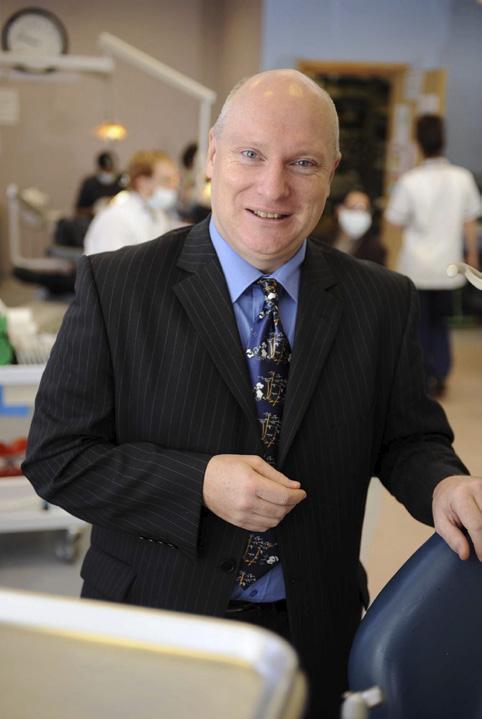
The governance team continues to support the British Orthodontic Society with enquiries from the public, request for the opinion of our members, help with communication both written and digital. We have continued to work with the regulator the General Dental Council and in the production of the excellent Clinical Effectiveness Bulletin.
Mariyah provided me with an update that included a steady number of requests for surveys of the society. These are mainly related to dissertations and research from orthodontists in training however, some requests
We repeated our aim to support orthodontists with their research but we do not want to overwhelm the membership of the society with too many requests for surveys. Ann Wright has been our gatekeeper and Louise Woodhams, our executive support, will take over this aspect of surveys. I have offered to help Louise with communication with the membership if this is necessary. We have a general format for the survey requests that would normally include some information about the survey provided in the BOS request form.
The ability to gauge the view of UK orthodontists is something very valuable to the society and we must not over use it therefore not every request for surveys will be granted.
Publications:
Sameer has very kindly been looking into improving our digital offer in communications but the governance team and the board still feel paper leaflets have a place for some of our patients, their parents and grandparents. Provided the cost of production of the leaflets is covered by the sale of the leaflets we would like to continue to support this format of communication. Sameer is also keeping our information leaflets and PILs together with advice sheets up to date.
As part of the revamped BOS News, we, as the Clinical Governance Directorate, wish to take this opportunity to highlight our support of members by including an advice sheet in each edition. BOS advice sheets are written by members of the society for members of the society and offer friendly advice rather than legal guidance. Advice can be used as a refresher or as a source of professional development.
We would like to thank members of the society for regularly updating and increasing the breadth of our

advice sheets. If you feel advice sheets on other topics would be of value, please do not hesitate to let us know.
For this addition our advice sheet is “Running a mixed practice and maintaining ethical standards”.
Clinical Effectiveness Bulletin:
Robert has done a great job with the 54th issue Spring 2025. We have articles looking at completing the cycle with re-audits demonstrating improvement in practice, quality improvement projects in important areas including Cleft lip and palate care.
Robert also provided me with an update on the adverse incidents reporting (Farooq Ahmed) that was set up in 2012. There was a report of an allergic reaction to a chin cup used with protraction headgear but no reports of adverse incidents in relation to headgear safety for over a decade.
Charlotte Toms is a medical assessor for benefit and risk evaluation from the medicines and healthcare products regulatory agency in London and I met with her on Teams. I said although headgear was a technique I was taught as a postgraduate student and a technique included in the new orthodontic curriculum, the number of patients being offered headgear was reducing as TADs and other forms of anchorage become more

popular. Charlotte seemed pleased with the publications I was able to direct her to on headgear safety with the BOS safety recommendations, information leaflets and advice about consent. Charlotte had contacted the BOS because of an enquiry about headgear safety. She will respond to that enquiry.
Ethics
Nicky has continued with his contact with the GDC. No further updates on the GDC fitness to practice guidance and what role our advice sheets might play. The GDC has produced an updated scope of practice guidance. These are still under review.
BOS has suggested:
Orthodontic therapists can undertake:
● preparation, insertion, and removal of fixed appliance components previously prescribed or, where necessary, activated by a dentist
● insertion and removal of removable appliances previously prescribed or, where necessary, activated by a dentist
There was also an agreement orthodontic therapists should not be doing procedures that produce a loss of enamel eg. restorative dentistry or interproximal reduction.
Discussions will continue.




The BOS is a charity committed to enhancing standards of professional practice in orthodontics and it strongly endorses the General Dental Council’s (GDC) key principles of ethical practice.
All GDC Registrants are obliged to abide by the professional standards laid out in the GDC Standards guidance documents. The key fea-tures are:
1. Putting patients’ interests first and acting to protect them.
2. Respecting patients’ dignity and choices.
3. Protecting patients’ confidential information.
4. Co-operating with other members of the dental team and other healthcare colleagues in the interests of the patients.
5. Maintaining your professional knowledge and competence.
6. Being trustworthy.
7. Obtain valid consent.
8. Have a clear and effective complaints procedure.
9. Raise concerns if patients are at risk.
Orthodontic services are commissioned by regional commissioning authorities. Primary Dental Service (PDS) agreements restrict provision of orthodontic treatment to anyone under the age of 18, and limit the number of cases that can be treated within the National Health Service (NHS) per annum. In Northern Ireland/Scotland treatment is based upon fee per item (as per the old GDS contract) and treatment can be provided to any patient with a clinical need based upon the Index of Orthodontic Treatment Need (IOTN). Many practices now provide both private and NHS care for children under the age of 18 years. Treatment of adults on the
NHS may be available but there is a lot of regional variation and depends on the treatment setting and type of malocclusion. Prior approval is often required to stipulate circumstances when treatment can be provided to adults. The BOS give advice on the professional standards expected within or-thodontic practice
https://bos.org.uk/professionals-members/mem-bersarea/advice-sheets/
The IOTN determines which patients have a dental health need for orthodontics. The index scores occlusal features objectively and has been validated by independent research. This system allows clinicians to show patients have a demonstrable dental health need and therefore eligibility for NHS treatment.
Those patient’s who do not meet the criteria can only be offered private treatment. There must always be licence for individual clinical judgement and there is an appeals procedure in place to consider cases where the patients’ IOTN falls below 3.6. In these cases, patients will only receive NHS treatment in exceptional circumstances.
Private treatment can be legitimately offered to all patients who do not fulfil the criteria for NHS care. For those that have an IOTN score of 3.6 and above NHS care should always be offered in a mixed practice. If a patient then chooses to undertake treatment under a private contract, this is quite acceptable provided that

there is a clear understanding between the patient and the practitioner so that no misunderstanding can ensue.
Private treatment can only be promoted in terms of convenience for the patient or aesthetics of the appliance. For example, the most popular appointment times may be reserved for private patients outside NHS contractible hours. In addition, a larger variety of aesthetic appliance types can be offered which are inevitably more costly. It is important, however, to ensure that patients have been given all the information they need, in a way they can use, so that they can make informed decisions. This will include communicating clearly without using jargon and explaining all the available options including risks and benefits of different treatment available on the NHS or by private contact (GDC Standard 1.7.2).
Ideally verbal information should be supplemented in writing and it is important that differing options are presented. When explaining the difference between NHS and private treatment, it should not be suggested that a better or quicker outcome can be obtained privately (GDC Standards 1.7.3). If a functional appliance is clinically necessary, for example, it is unethical not to provide it for an NHS patient. NHS regulations do not allow mixing NHS and private treatment on the same patient.
The outcome of treatment of mild malocclusions can sometimes lead to an increased potential for relapse. It is therefore very important for patients to be aware that they may only receive transient benefit, unless they commit themselves to long-term retention.
Running a practice according to ethical principles becomes more challenging in a mixed practice. Through all activities, there should be one basic principle: ‘putting patients’ interests first and acting to protect them’ (GDC Standards). Please refer to BOS advice sheet: Practice advertising, leaflets and websites https://bos.org.uk/professionals-members/membersarea/advice-sheets/
The reader is also advised to refer to GDC Guidance on Advertising (www.gdc-org.uk).
The fees for treatment should be reasonable in regard to the work involved, the expenses incurred and the expertise of the practitioner. It is important that
practitioners never ask for, nor accept, any payment, gift or hospitality; or accept or make any referral, which may affect or appear to affect professional judgement. Potential conflicts of interest should always be declared.
It is also essential that all practitioners work within their knowledge, professional competence and physical abilities, identifying their own limitations. When necessary (or if the patient requests it) patients should be referred for a second opinion and for further advice.
Treatment under private contract is not monitored in the same way as care under a NHS contract. Ultimately, however, it is necessary for all practitioners to abide by the profession’s ethical guidance (GDC Standards for Dental Professionals) which exists to protect patients. Practices should have their own complaints procedure which is adequately publicised at the practice. This should be the first point of contact where a patient is unhappy. Most complaints derive from poor communication and can usually be resolved at this level. For more detailed information on the management of complaints please refer to BOS advice sheet: Communications and how to handle complaints https://bos.org.uk/professionals-members/membersarea/advice-sheets/This advice sheet discusses local resolution of complaints and also the pathway to follow for those issues that cannot be resolved locally for both NHS and private patients. In addition,defence organisations often produce advice booklets on complaints handling for each jurisdiction which may be helpful (see references below).
● General Dental Council: www.gdc-org.uk
● NHS rules and regulations: www.nhsbsa.nhs.uk/nhs-dental-services (England and Wales)
● BOS advice sheets: bos.org.uk/professionals-members/membersarea/advice-sheets/sheets
● Dental Protection Society: www.dentalprotection.org
Administrative Office: The Royal College of Surgeons of England 38-43 Lincoln’s Inn Fields London WC2A 3PE
Telephone: 020 7353 8680 Fax: 020 7353 8682 Email: executivesec@bos.org.uk www.bos.org.uk BOS is a Company Limited by Guarantee. Registered in England & Wales. Company No. 03695486. Registered Charity No. 1073464
The British Orthodontic Society Conference is the only UK event which brings together the entire orthodontic community. Hosted in the South West of the UK at the state-of-the art ICC in Wales for the first time, delegates can look forward to three days of thought-provoking presentations and discussion delivered by a sparkling line-up of expert, national and international orthodontic luminaries covering a broad spectrum of progressive clinical topics related to the science and art of orthodontics.
Keynote speakers personal meet and greets | Wednesday Workshops
Studio Theatre Sessions | Trade Theatre | UK’s largest-ever orthodontic expo-fair
Invited speakers include


Featuring keynote speakers

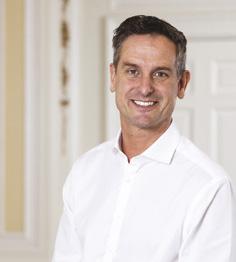
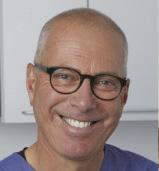


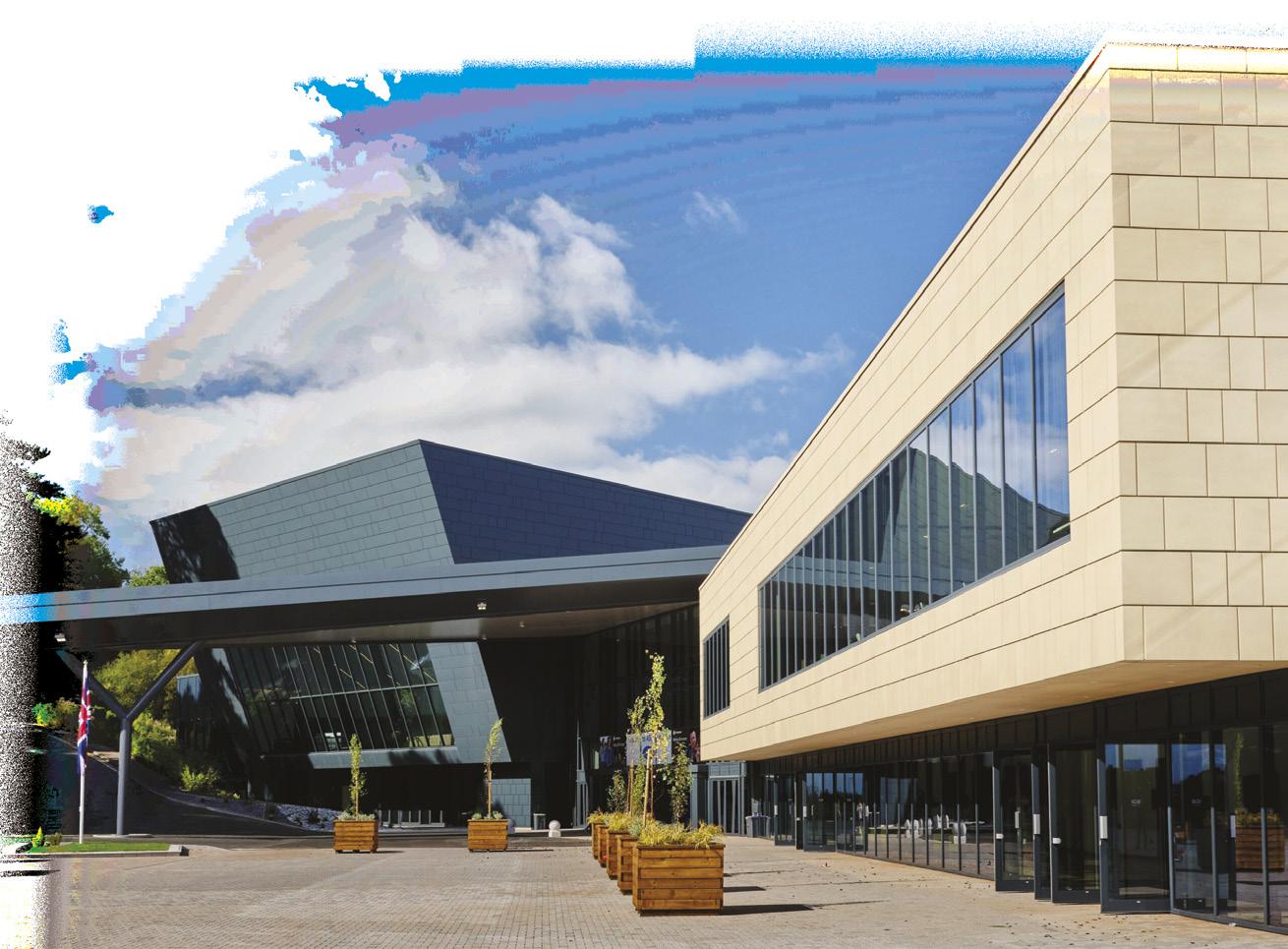



I have recently taken over the role of Director of External Relations for BOS and as this is my first report for BOS News, I will start by saying a big thank you to my predecessor, Anjli Patel, who has paved the way for me to carry on the amazing work this team has achieved so far. I very much look forward to working with the excellent BOS Comms team and engaging with our wider membership and beyond.
There was widespread coverage of the election of our new BOS President, Robbie Lawson and Honorary Patron, Roz McMullan. Both have many years of experience that will be invaluable in their roles. I’m sure everyone will welcome them into their new roles.




The BOS was asked to comment on a recent study linking soft diets to smaller jaw sizes and the impact of ultra-processed foods on health. The Guardian published the response on the 14th January with emphasis on the multifactorial nature of malocclusion and evidence-based treatments.
We also contributed to a recent article for BDJ in Practice on dental tourism. Orthodontics doesn’t often fit into the appealing “quick-fix” approach to seeking treatment aboard, but some orthodontists may well have come across patients opting for veneers or composite bonding to mask malocclusion. Comments were made on cosmetic treatments having their own long term maintenance implications and the importance of informed consent.
We will shortly be launching a membership survey to find out what really matters to our members, which benefits are important to you and new options that could be of interest. This will be a short online survey initially so look out for it in your inbox, your voice counts!
FREE registration with ProDental CPD in mandatory topics
• Medical Emergencies • Radiography/Radiation Protection
• Decontamination/ Disinfection
To register
Please email executivesec@bos.org.uk and enter ‘BOS CPD’ in the subject line.
Please provide your name and GDC number and you will be sent an invitation link.
www.bos.org.uk
A new website dedicated to Hypodontia is in production. This will be a public facing website like the excellent “Your Jaw Surgery” resource. Sofia Ahmed is leading this project, and we will update members when this becomes available.

I hope you have enjoyed the BOSF funded case studies in this edition of BOS News. In October there will be a special edition dedicated to the fantastic and invaluable work of the BOSF. So many of our members have had their research projects funded by BOSF, research that has resulted in so many positive impacts for our patients. Look out for the special online edition. There are many ways to donate to BOSF and every donation, no matter how small has potential to make big changes.
BOS continues collaboration with Kidscape
BOS is delighted to continue our partnership with Kidscape. The award-winning bullying prevention charity is celebrating their 40th anniversary starting in April with their “Kidscape’s 40 Stories” campaign. The yearlong anniversary campaign is designed to celebrate Kidscape’s 40 years of hope and help – and raise awareness so that even more bullied children can get the support they need. See Kidscape’s website (www.kidscape.org.uk) for information on training workshops, resources and advice on how to support
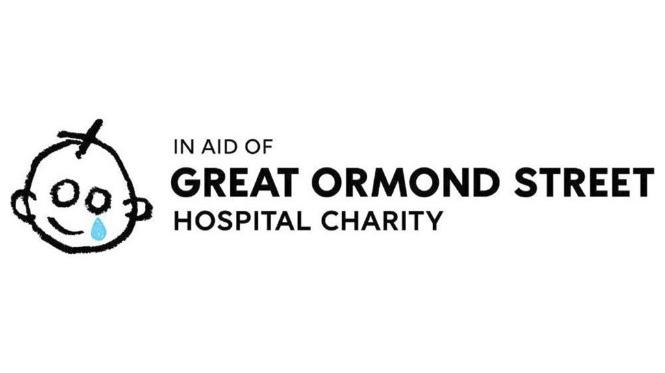
Great Ormond Street Hospital. Some BOS members will have had personal experience treating patients at GOSH and this hospital has played a pivotal role in Neil’s own life. He is training hard and would love your support!
Thank you again to our fantastic comms team, Chris Baker, Neil Hillyard, Emma Pelling and Neil Morley for all their hard work.
Hayley Llandro Director, External Relations


Dear Colleagues and Friends,
On behalf of the organising team, I am thrilled to invite you to the British Orthodontic Conference 2025, taking place from 24–26 September at the state-of-the-art ICC Wales in Newport.
Set within 2,000 acres of Welsh woodland and just minutes from the M4, ICC Wales offers a stunning and inspiring setting for this year's conference. It’s a venue that not only reflects the innovation and ambition of our profession but also provides a welcoming and accessible space for delegates from across the UK and beyond.
Following the huge success of our 30th anniversary conference in Birmingham, we’re building on that momentum to deliver a refreshed, future-focused event that celebrates the full breadth of orthodontics. Scientific Professor Martyn Cobourne, alongside the BOS team, has curated a programme that promises world-class education, team-wide learning, and practical insights for every delegate.
This year’s scientific programme includes a diverse and exciting line-up of speakers covering topics from everyday clinical challenges to future innovations. We’re delighted to welcome keynote speakers including Dr Jay Bowman, Dr Thor Henrikson, Dr Eugene Chan, Dr Simon Littlewood and Dr Dietmar Zuran amongst many more, each of whom brings a unique global perspective to clinical excellence, innovation, research and patient care. In addition, our guest keynote slots are given over to Royal Institution Christmas lecturer Professor Hugh Montgomery, OBE Director of the Centre for Human Health and Performance at UCL and Provost’s Award for Public Engagement recipient Professor Sophie Scott CBE, Professor of Cognitive Neuroscience at University College London and stand-up comedian. A unique and unmissable programme I hope you agree.
The popular parallel sessions return for 2025, with content designed for the whole orthodontic team, including dedicated programmes for therapists, nurses, technicians, and practice managers. Whether you’re looking to deepen your clinical knowledge, explore the future of digital orthodontics, or strengthen your team’s skills, BOC 2025 offers something for everyone.
Back by popular demand are the Studio Theatre and Trade Theatre — dynamic spaces for informal, interactive learning. These sessions will include live Q&As, panel discussions, and industry insights presented in new and engaging formats. They offer a brilliant opportunity to explore ideas, ask questions, and connect directly with speakers and suppliers.
Also returning in an updated form are BOC trade sessions in the form of Wednesday Workshops on 24 September morning - the popular and more in-depth workshops curated by BOC partners and collaborators. These bespoke sessions allow delegates to customise their BOC experience with content tailored to specific areas of interest and practice. If you’re attending, be sure to book early to secure your preferred session.
And of course, no BOC is complete without a legendary social programme. The Wednesday welcome reception and Thursday night party (all included in delegate rates!) will be a celebration not to miss— bringing everyone together to relax, connect, and enjoy the incredible setting. It’s included in your delegate pass, so mark your diary and prepare to raise a glass with colleagues and friends from across the profession.
BOC remains the flagship event of the British Orthodontic Society, and more than ever, it serves as a vital opportunity to learn, share, and look ahead to the future of our specialty. I encourage you to keep in touch with BOC updates via our social feeds, take advantage of the early-bird discount when registration opens very soon, and be part of what promises to be another unforgettable chapter in the BOC story.
I look forward to welcoming you to sunny and beautiful Wales for the first time in BOC history this September.
With best wishes,
Guy Deeming
On behalf of the BOC 2025 Organising Team
P.S. During registration, you’ll again have the option to make a small donation to two causes close to our hearts:
● Kidscape, our 2025 charity partner, supporting children and families affected by bullying.
● The British Orthodontic Society Foundation (BOSF), whose research funding underpins the continued excellence and advancement of orthodontics in the UK.
Your support makes a real difference—thank you for considering it.


The imminent arrived of Spring is marked by the Practitioner Group Study Day. Our annual meeting at the Stratford Manor Hotel, Stratford-upon-Avon, is always well-received and very well supported by excellent speakers and our much appreciated trade-partners.
This year was no exception, and a great variety of topics were presented on:
Sleep apnoea by Arti Hindocha gave an introduction on the use of anti-snoring devices and how to manage these patients. Brian Kelly, a perennial supporter of our Study Day gave an NHS-update and advice on the avoidance of "Red" and "Amber" grades.
This year we were also delighted to have 32Co. support our study and a presentation from Dr Sonia Szamocki; we look forward to further collaborations from all our supporting partners.
Lunch was a great time to catch up with colleagues and spend time with the trade exhibitors and view the winning PG-Case Prize Presentation.
Post luncheon, Marissa Bell presented several cases treated with Invisalign and gave some excellent advice on making treatments as efficient as possible and also the use of aligners in the mixed-dentition.
processes involved post-ortho and the use of digitalplanning and CADCAM/ 3D-Printing workflows. A huge "Thank You!" to Doug who was able to step in and present at short-notice (we have given him much more planning time for next year when he will be presenting on advanced whitening techniques).

A last-minute change to the programme had Douglas Watt presenting on "Digital Smile Design – from Screen to Mouth". This was a great insight to the restorative

The day finished with Ian Hutchinson, another of our long-standing supporters. "The Side Swipe...everyone has a plan until..." was a presentation showing all of our worst orthodontic fears and how to avoid them, and if you didn't manage to avoid them, how you might rectify the situation. These presentations are so valuable as they A) teach you how to avoid the pitfalls. B) Show you that everyone makes mistakes, and learning from those is as valuable as looking at "perfect" cases!
A big "Thank you" to Sean Masterson, who has Chaired the Practitioner Group for the last four years. Although he has now stepped-down, he has agreed to remain on the PG Committee (you don't escape that easily Sean!)
The Stratford Manor Hotel, as always, looked after our event very well and we have booked Saturday 7th February 2026 – so please save the date!



My name is Jon Machell and I have worked in orthodontic specialist practice in Exeter since 2000. I am honoured to take up the role of Chair of OSG and I would like to extend my heartfelt thanks to Richard Jones who has worked tirelessly for the BOS in a number of roles over many years. His encyclopaedic knowledge, intellect and sense of fun have made him an outstanding leader and he will be a very hard act to follow; I am delighted to say that he has promised to stay involved for the time being.
I would also like to thank Simon Jackson and Damian Bourke, who have finished their tenures as treasurer and GDPC representatives respectively. It gives me great pleasure to welcome Mark Forty, Faiza Lewis and Pardeep Saini, three superb orthodontists, who bring a wide range of experience, which will prove invaluable to the OSG committee as we move forwards.
Thank you to Jiten Vadukal for coordinating the regular “Ortho Bytes” digital publications, covering topics such as tax planning, marketing, investments and pensions. All six editions have been very well received by all members and are available for download from the BOS website. Watch out for the Spring 2025 edition which will be released shortly.
The OSG mentoring scheme is also proving very popular under the stewardship of Aliya Hasan. If you are a recently qualified orthodontist looking for some guidance navigating your first year in practice, this free scheme is here to help. We have over 30 mentors registered, so please get in touch by emailing: mentoring-OSG@bos.org.uk
We have received a good number of inspiring applications for the 2024-5 prize, showcasing the amazing differences orthodontists can make to peoples’ lives, often when they are faced with challenging problems. The award will be judged by Professor Tim Newton and the winner announced at the BOC in
Wales. Please feel free to submit your entries for this year’s award, application forms are available on the BOS website.
The recent meeting held at 30 Euston Square on Saturday 29th March was a huge success with over 100 delegates attending and was an opportunity to welcome our new BOS President and great friend to the OSG, Robbie Lawson.
Matt Clover kicked off the day with his talk entitled “NHS commissioning, procurement and political update.” His experience as Director of Clinical Practice shone through and it is worth noting that Matt is on hand to answer any questions members may have on this important subject.
Simon Littlewood then discussed “Digital workflow & orthodontic retention: new opportunities in specialist practice.” He outlined exciting new developments and demonstrated why he is the recognised authority on this topic.
Federico Migliori then presented a superbly illustrated presentation entitled: “Extraction treatment with aligners.” He provided a logical series of solutions to help overcome the issue of tipping in these cases.
After lunch, Roz McMullan provided an update on the BOS Foundation (BOSF). She explained the importance of promoting and supporting high quality research in orthodontics and explained how easy it is to make donations through the BOS website: https://bos.org. uk/bosf-donations/
The next speaker was Julia Naumova who provided


a fantastic presentation on “How to treat impacted canines”. She was followed by Morten Laursen with his fascinating lecture on “Malocclusion and tooth wear.”
In the final session, Raj Rattan MBE provided a thought-provoking talk entitled “The pursuit of happiness for professionals.” He blended his gentle humour with his love of philosophy to provide an entertaining and thought-provoking discussion. He realised that positive feedback from his patients and Kit Kats made him happier than the shiny new car on his drive.
An excellent day was rounded off by James Martin with his presentation, “Dentists that invest – how to
make the most of your money.”
A massive thank you is due to Roopa Kukadia, who as meetings secretary, worked hard to organise what was generally agreed to be one of the best OSG meetings for many years.
Finally, on behalf of all OSG members, I would like to take the opportunity to say a massive thank you to Ann Wright for everything she has done for all of us for so many years. We miss you Ann and wish you a very long and happy retirement.
Jon Machell - Chair

It been another 6 months in the life of the COG committee… are we turning a corner, or going down another blind alley…
With the installation of a new government, there does appear to be a new found impetus to drive down waiting times. Whereas previously only the status quo was supported, there is now an active drive from central government to get waits below 52 weeks. The desire to get back to the 18-week target may be aspirational, but it is good to see movement of funding for patients to receive timely care. As with all things, its all about balance, so do remember to look after yourself if you are considering or undertakings WLIs for your trust! Be focused with your management on set goals, considering time limiting your help –there is always the option of recruiting an additional consultant?!
Coupled with the above issues, and the lack of consultant person power in some areas, external companies are actively recruiting for (Consultant) Orthodontists to get waiting lists down in hospitals. In others, Trusts are considering decoupling 3b services from the hospital.
We would ask members who do provide outsourcing to fellow consultants struggling with demand, to work collaboratively with their permanent colleagues.
The issue of insourcing is a potential cause for concern - that the lines between hospital and practice will become blurred. Some trusts may decide a hospitalbased model is no longer required. This would not be in the best interests of complex patients. This may be a developing issue….
Access in specialist practice and general dentistry remains an issue for our patients. The OCDO’s primary concern is patient access. I hope that if the wheels of primary care are greased up (new contract anyone?), that issues further down the line will ease themselves. Maybe I’m just eternally positive..
The Consultant Workforce Network Map, along with the BOS Hospital Transfer template is now in the COG members section of the BOS website. I have requested the board better highlight the addition to members as it is difficult find at the bottom of a page! Please reach out if you have trouble finding it, or have any (positive)

feedback on its use. We aim to update the map on an annual basis at the COG symposium and AGM.
Hospital

We have been asked to contribute to a body of work defining general guidelines to working patterns in hospital. This may include guidance on numbers of patients seen per session, patterns of work when supervising trainees, New/follow-up/MDT ratios, OT and nurse led clinics and essential support the trust should provide (radiography and lab-based work).
Whilst potentially fraught with disaster if we are too prescriptive in our guidance, we felt as a group, it would be better to at the table than outside the room.
By the time you read this our symposium at the East Midland’s Conference Centre (EMCC) in Nottingham, will have taken place. As a now adopted ‘Nottinghamian’, I hope it was a success for the 120 delegates that made the trip to the East Midlands for the first time in living memory!
The EMCC was a new venue to experience this year, to move the COG around the map, and experience a different city. If it was successful, then I hope the East Midlands would be a future event location in the middle of the UK! If it was a failure, your current chair is demitting this December - so Nottingham may, for some reason, slide to the back of people’s minds!
Whatever the outcome, I will leave you with news that the Symposium did not make a loss. This has been the first time in the last 3 years and likely a rarity before the BOS board adopted a more business-like approach to steering events.
Whilst I did help organise this year due to geography, special thanks should go to Arti Hindocha and Sujata Sharma who expertly kept all the plates spinning in the air for a year whilst holding down their day jobs. We
hope this recipe for success can be repeated in 2026!
As I enter my final year as your chair, I will sign off by asking for willing applicants to take up the mantle as a committee member or indeed your next COG Chair! Being part of the committee isn’t an easy ride, but it does provide an additional facet to your clinical practice, to share and solve problems with likeminded people, and build a better future for the next generation.
If you want to influence how the BOS responds to issues and improve orthodontics at a national level, I’d urge you to consider putting yourself forward for one of the roles up for nomination/election in 2025!
Best wishes,
Andrew Flett Chair of COG
If you need to get in touch, please email chair-COG@bos.org.uk or contact the BOS office.
This year’s Consultant Orthodontic Group (COG) symposium was held at the brilliant East Midlands Conference Centre in Nottingham. The programme comprised a diverse set of lectures from clinical topics to improving mindset within the orthodontic workplace.
The Ballard Lecture, given in commemoration of Clifford Ballard, was delivered this year by Dr Farhad Naini, Consultant Orthodontist at Kingston Hospital and The Gillies Unit, Queen Mary’s Hospital, Sidcup. This insightful lecture, titled ‘Bringing art to our aid: Reflections on facial aesthetic analysis’, provided a useful, historic and contemporary viewpoints on defining facial beauty and how this can be applied to clinical orthodontics and facial planning in orthognathic patients.
A wide array of post-CCST lectures, giving an understanding into work done by trainee consultants around the country. Topics from Obstructive Sleep Apnoea management to CBCT provision and predictive features for success of twin-block appliances were given.
Jason Wong MBE, Chief Dental Officer for England, gave an intuitive presentation on the work undertaken


by the CDO and his team. Particular focus was given to sustainability aspects of his agenda with phasing out amalgam by 2035, and advocating the dental team to manage complications incurred by patients following dental treatment undertaken abroad.
The afternoon session on the first day culminated with a clinical sessions. Ian Dunn presented on the periodontal-orthodontic interphase, with updates from the last periodontal workshop. Anjali Kandiah, Consultant Paediatric Dentist, highlighted the importance of bioceramics in modern paediatric dental trauma management, with the presentation of joint orthodonticpaedodontic trauma cases. Valmiki Sharma, Consultant Oral and Maxillofacial Surgeon at Luton and Dunstable NHS Foundation Trust outlined key considerations for the orthodontist when assessing and treating patients with TMD.
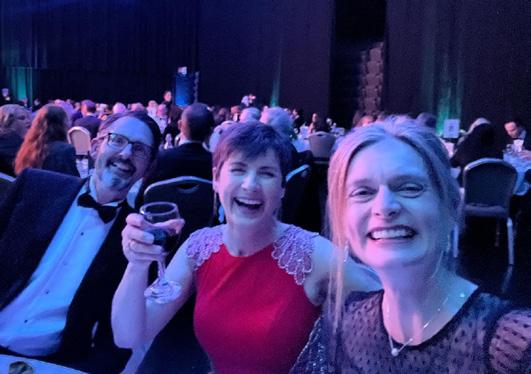
The lecture programme on the second day started with an incredible lecture by Professor John Gibson, titled ‘Suicide- How could I possibly save a life’. John highlighted his personal journey of mental health challenges following the suicide of his son and other work-related stressors, resulting in him founding The Canmore Trust, a charity focussing on suicide prevention and post-prevention. Rarely has a lecture been so profound and speaking to delegates, it was apparent that this talk was one which we’ll all remember for years to come.
David Murray, Consultant Orthodontist in Dundee, presented on power of a growth mindset, providing a wealth of evidence on the importance of creating positive values throughout the workplace. This was built up further with a lecture by Professor Connie Wilson, professor of medical education at University of
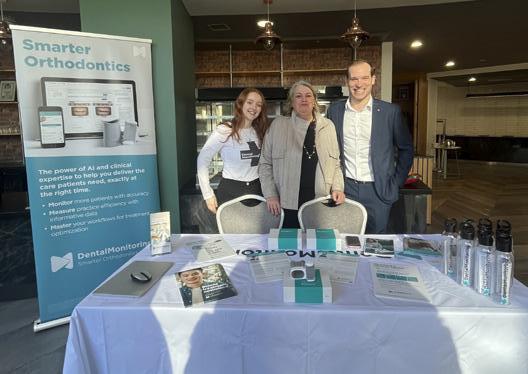

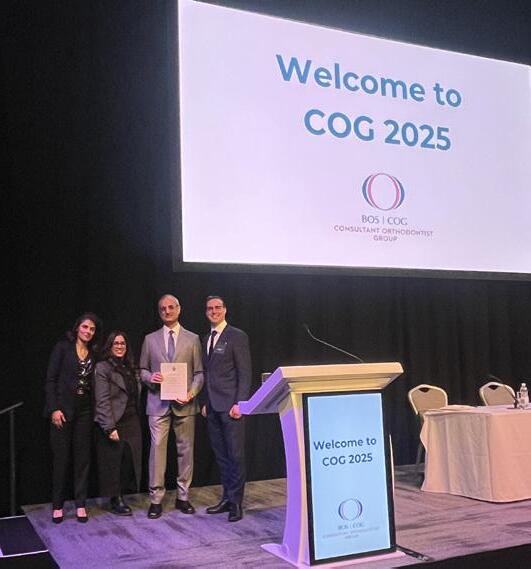
Birmingham, who empowered delegates to have difficult, but appropriate, conversations within the workplace, and how best to approach them for all stakeholders.
Leonie Seager and Rebekah Tudor from Shrewsbury and Telford NHS Foundation Trust presented on service improvement projects within the orthodontic department. With projects highlighted from the GIRFT initiative, it provided delegates with much to take back to their own hospitals to aid development their service further.
As with any event organised by Arti Hindocha, the social programme was something phenomenal, with the highlight being COG symposium gala dinner. With an espresso martini or mocktail in hand, it provided the perfect opportunity to catch-up with colleagues. Following a stellar three-course meal, the dance floor was opened up, with carriages just after midnight to the hotel lobby for further drinks and socialising.
From speaking to delegates, the inclusivity of this event was particularly recognised. This included mocktails available at social events, to Ramadan lunch boxes and prayer room availability.
A particular thank to our great sponsors for the event, DB Orthodontics and Dental Monitoring. The stands were frequently visited and enjoyed by the delegates, with sponsor representatives highlighting their new innovative products in their session "The Sponsor's Corner".
The next COG symposium will be held in the historical city of Bath between 5th – 6th March 2026. Please put it in your diaries, and if this year’s symposium is anything to go by, it’ll be something you won’t want to miss!!




We’re excited to kick start 2025 with a dedicated TGG Committee. The unprecedented number of applications for our 2025 elections reflects the growing enthusiasm for our society, and we are looking forward to the year ahead.
As we bid farewell to our 2024 committee, we wrapped up the year with two successful “So You Want to Be an Orthodontist” study days in the North and South. In Edinburgh, Steve Chadwick delivered an insightful talk on ‘Why Become an Orthodontist?’, which also served as a positive reminder to the senior trainees how rewarding an orthodontic career can be. Attendees also benefited from a comprehensive overview of national recruitment and the interview process, expertly presented by Hayley Llandro and Geetanjali Sharma.
The afternoon explored broader orthodontic career opportunities, featuring Colin Ritchie on research involvement and our BOS President Robbie Lawson on life in specialist practice.


Meanwhile, our London “SYWTBAO” day reached similar heights of success, hosted for the first time at Bridewell Place in the City. We were delighted to welcome back our ever-inspiring guest speaker Lucy Davenport-Jones, alongside Martyn Cobourne who

delivered an engaging breakdown of the orthodontic curriculum. Future orthodontists also gained valuable perspectives into career pathways through an academic talk by Robert Smyth and on specialist practice from Ian Arad.
The momentum carried into 2025 with our annual MOrth Study Day, where over 50 delegates joined us in London. We owe thanks to Jadbinder Seehra and John Scholey, the heads of the examination boards, for their invaluable overviews of the process, as well as unseen case practice and mechanics discussions respectively. Delegates also benefited from two highly relevant clinical talks covering a pragmatic approach to TADS by Farooq Ahmed, while Gavin Mack explored the complexities and strategies for AOB management.
After Chris Wright expertly delivered his Gold Medal talk, the day was rounded off with clinical pearl presentations. We would like to thank all trainees who made submissions and congratulate those selected to present. This session is always a highlight, offering the opportunity to learn new tips from our peers!
A special mention goes to Ohsun Kwon, who not only organised the day but also stepped up to cover the role of Education Rep alongside his SAC role. His tenure has now ended and he will be greatly missed on the committee. We would also like to extend a huge thank you to Claire Joffe in her role as Events Manager—her collaboration has been instrumental in ensuring each of our study days’ success and we look forward to continue working together.
We have a comprehensive programme lined up for Post-CCSTs, including our annual ISFE Study Day which will take place on 24th April 2025. This will be a virtual course to ensure accessibility for our trainees across the UK. Additionally, the PostCCST National Seminar Programme will continue to run throughout the year covering a myriad of clinical and management topics. On behalf of trainees, I would like to thank the colleagues who continue to generously offer their time to support these sessions.

It is an exciting year to Chair this committee, although these are big shoes to fill following the esteemed work of Naeem. This marks my third year on the TGG Committee, but one in a paradigm shift as I return from maternity leave and experience the joys (and challenges!) of balancing training with parenthood. I would like to remind trainees who are returning from extended periods of leave to engage with their Return
Decontamination/ Disinfection
To register
Please email executivesec@bos.org.uk and enter ‘BOS CPD’ in the subject line.
Please provide your name and GDC number and you will be sent an invitation link.

So You Want to be an Orthodontist? Study Day, November 2024, London
to Training (SuppoRTT) resources. I am also happy to chat to any trainees going through these transitions.
Having celebrated 30 years of the BOS, we now look ahead to the future of our specialty. There are uncertainties facing us as trainees, with the release of the new curriculum and proposed examination changes. As a group, we are committed to supporting trainees by providing high-quality educational opportunities, to ensure we continue to deliver the next generation of exemplary orthodontists.
Finally, I encourage all trainees to explore the BOS Scholarships and Awards area on the website as there are a host of opportunities available, and follow us on Instagram (@bostraininggrades) to stay up to date with the latest news.
www.bos.org.uk
I look forward to catching up with many of you at our upcoming events and of course, in Wales this September!
Georgina Kane TGG Chair
It was wonderful to see BLOS members attend the 10th World Society of Lingual Orthodontics (WSLO) Congress held in Rome on 6-8th March 2025.
This was an extremely advanced conference with significant emphasis on lingual biomechanics and TADS. Speakers from all over the world were present discussing clear aligners, lingual orthodontics and TADS. It was fascinating to see the most complex of malocclusions treated to such an exceptional standard.
The theme of the conference was ‘The Essential Invisible’ organised by the WSLO President, Dr Ryoon-Ki Hong, Dr Giuseppe Scuzzo (Congress Chairman) and Dr Didier Fillion (Scientific Chairman).
The congress clearly delivered on its promise to be a journey through the technological evolution of Invisible Lingual Orthodontics as well as an exchange of experiences, expertise and new clinical solutions.
The conference exhibited an engaging program which included keynote sessions.
The speakers from the UK were:
● Dr Sunil Hirani presenting on ‘What do we know about clear aligners, lingual fixed appliances and TADS in 2025?’.
● Dr Asif Chatoo presenting on ‘Tooth wear - the orthodontic interface’.

● Dr Steffen Decker presenting on ‘How to be different - the power of choosing the right tool and when to combine clear aligners with lingual braces’.
Of course it was huge privilege and honour to also see the current BOS President, Dr Robbie Lawson in attendance (see below).
The next WSLO Congress will be on 8-10th April 2027 in Beijing, China.
Lingual Orthodontics is practised by 1% of the world's orthodontists as the skill set required to treat patients and the level of biomechanical knowledge is exceptionally high.
BLOS members are advised to regularly check the website: www.blos.co.uk for the past recorded webinars and upcoming webinars involving clear aligners, skeletal anchorage and lingual fixed appliances. The website is comprehensive and we welcome new members who wish to push themselves clinically especially with complex malocclusions.
Dr Sunil Hirani BLOS Chairman



Never has a statement been truer than during the recent events evolving around the GDC scope of practice documentation consultation meetings.
This is an ongoing and ever evolving process that has seen an enormous amount of work carried out by all the stakeholder groups, but we need to acknowledge in particular the BOS representative, Nicky Stanford. His diligence and attention to detail in looking over the scope of practice details for the Orthodontic Therapist section has been excellent. He has maintained good communication between the ONG and the GDC ensuring that all our points of concern and suitable solutions have been clearly documented and communicated. His help and guidance during this process has been invaluable and very much appreciated. It has highlighted the importance of us working together for the benefit of the entire orthodontic team. Further evidence of this was shown by the BOS following an invitation for a representative of the ONG committee to sit in the Education Committee meeting held at the new BOS head office at the Royal College back in September. It was a beneficial experience for both groups to understand the learning needs of BOS members and all the affiliated groups. The overriding outcome was that we have a lot in common when it comes to us having a passion to improve knowledge and provide quality CPD that is relevant and accessible, and we look forward to working together on combined projects in the future.
And on that note, we would like to reach out to BOS, ONG and all affiliated members for your help with our next project. We would like to investigate burn out amongst the registrants in particular the DCP groups and would like to hear if anybody has any experience of this either personally or if they have come across this in their workplace. We understand that this can be a difficult subject and obviously confidentiality will be always adhered to. We would like to build a safe environment to discuss the issues, and we need to understand the factors that can contribute. Through this work we hope to be able to have open and honest discussions, identify the areas that may contribute to burn out and promote possible pathways to help to prevent burnout or to help recovery.
Could you please contact the ONG team via email in the first instance at ongteam25@gmail.com – thank you.
The ONG committee have continued to work together in order to prepare for another busy year comprising of the Spring Study Day on the 5th April, attending
dentistry shows in Manchester and London and attending Diplomat ceremonies at the RCS in London. We have managed to send a representative to the FDS meetings, GDC stakeholder meetings and other DCP network events. We continue to ask for new committee members to join us to be able to continue to represent our DCP groups in particular orthodontic nurses. If you are interested in joining the team, please contact us via email; any of the team would be happy to have an informal chat and answer any questions that you may have.
Membership benefits continue to be added thanks to the excellent work carried out by our very busy Sponsorship secretary Jenna who also happens to be a very busy Orthodontic Therapist. The latest to be added is a 30% discount on subscriptions to the Orthodontic Update Magazine. New sponsor deals and connections are very important to assist our group to be able to continue to provide CPD events and we all value the hard work that goes into this from Jenna.
Booking details for the next BOC are available on the BOS website and our ONG members have again been given discounted access, so please book early to benefit from early bird price offers.
We would be grateful to BOS members if you could discuss with your teams, the benefits of membership with the ONG and encourage them to join online at www.orthodontic-ong.org. Meeting others, listening to and sharing experiences can help develop the team in more ways than we think. Bringing teams together to learn and have some social time away from busy practice life encourages growth and development –resulting in making the dreamwork.
Tam Morris
It is with a very heavy heart and profound sadness that we pay tribute to David Morris, who fought his battle with cancer bravely and courageously for two years until October 2024. He was an inspiration to so many colleagues, friends and his family.
David was born in New York then moved to Wales when he was a child. He graduated from Birmingham Dental School in 1985 and following this he stayed in Birmingham to undertake Vocational Training and a Clinical Assistant post in Oral Surgery at the Dental Hospital. He then left Birmingham to work as a Senior House Officer in OMFS in Swindon followed by a Registrar post in OMFS in Aylesbury, before undertaking his Orthodontic training at The Royal London Hospital and further training as a Senior Registrar in Leeds, where he stayed for the rest of his career.
His thirst for knowledge and passion of the specialty was apparent from an early stage as he spent some time in the USA before his Orthodontic training started to broaden his experience of the multi-disciplinary approach for cleft patients and other craniofacial deformities.
He was Consultant Orthodontist at Leeds Dental Institute and Seacroft Hospital from 1998 until 2024 and Head of department from 2006-2016.
In the 29 years he worked at Leeds Dental Institute and Seacroft Hospital, he touched the lives of many


patients and staff members and positively influenced several generations of trainees throughout his time as an exceptional trainer. His contagious energy and infectious passion for orthodontics spread to all those he taught, whilst always sharing his fabulous sense of humour, charm and wit. He was an incredibly dedicated team player and educator, going above and beyond to support his colleagues and trainees, never hesitating to offer his time and prioritise helping others.
David was a role model to all those he trained and worked with and served the orthodontic community with dedication and passion. He was known not only for his remarkable skill and professionalism, but also the warmth and care he gave to his patients and trainees. He was Training Programme Director for Orthodontics in West Yorkshire from 2013-2016. He had a true passion for teaching and even in his last months he was committed to the Tip Edge course which he absolutely loved. He showed true joy on the day of his last course before his planned retirement.
David also served on many professional committees throughout his career, the most recent ones included Board member of the Faculty of Dental Surgery (FDS) Royal College of Surgeons, England from 2020 -2024 and Chairman of the BOS Clinical Standards Committee and Orthodontic representative on the FDS Royal College of Surgeons Clinical Effectiveness Committee of the British Orthodontic Society from 2006-2011. He
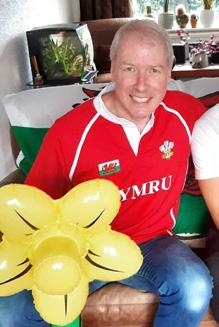

was always committed to supporting his colleagues and the specialty and selflessly gave up so much time to undertake voluntary roles in addition to his clinical work. Throughout his time in hospital, he kept his spirits up with his journals at his hospital bedside, always keeping his love of orthodontics close to his heart! He was also a referee for the British Dental Journal, European Journal of Orthodontics and Journal of Orthodontics and examiner for the Royal College of Surgeons, England for the MFDS, MOrth and ISFE examinations. He published many articles and was invited to speak at a number of international conferences throughout his career. He also won several awards, one of which was a Travelling Fellowship Grant to visit ‘The Hospital for Sick Children’ in Toronto, Canada from the T.C. White Bequest Fund (Glasgow RCPS) and spent two weeks in Toronto as an overseas observer with both the orthodontic and cleftmaxillofacial teams.
David and I spent many hours on Zoom calls over the past few years, working on a clinical textbook, which I now appreciate was a gift of the time that we spent chatting, enjoying his cheeky sense of humour and learning even more about his perfection of grammar and punctuation in any work he edited. I had joked that I would be graduating from the ‘David Morris School of English grammar’ after completing the book with him! His trainees will understand this joke and now appreciate the high standards he stretched us to achieve.
David will forever remain in the hearts of those whose lives he touched, especially his beloved wife (Alison) and children (Kate and Elliot), brothers, family, friends and colleagues. He enjoyed falconry, travelling and hill walking with Alison, always seeking new adventures. He loved to visit his childhood penpal, Pascal, who lives in Lyon. His passion for rugby was known to all who knew him, often wearing the Welsh flag as he watched matches! Many weekends were spent enjoying DIY in
the house or garden. He also enjoyed tennis and his talents did not only span his professional work but also his hobbies too, as he was a qualified tennis coach for the Welsh Lawn Tennis Association.
His legacy of compassion and service will continue to inspire all who knew him. May his legacy continue through all those that he trained and worked with. He was a true legend who we will never forget and was one in a million to all who knew him.

Thank you, David, for touching our lives with your kindness, warmth, laughter and incredible positive spirit. It is a privilege to pay this tribute to such a special individual I am grateful to call my trainer, mentor, colleague and friend.

We are so sad to report the death of Tony who worked for many years at the BOS office. Many of you will have met Tony when attending meetings at the BOS office or at the BOC. Tony was a much loved and respected member of the BOS office team. He battled illness so bravely for several years before passing peacefully away.

If you’ve ever said something to a patient that made you want to disappear into your scrubs or otherwise, I want to hear about it!
The Awkward Archwire is your safe space to share those toe-curling, laugh-out-loud moments—completely anonymously, of course.
We’ve all been there—that moment when a wellmeaning explanation to a patient goes horribly wrong. Whether it’s an unfortunate slip of the tongue, an accidental double entendre, or a phrase that made perfect sense in your head but left your patient in stunned silence, these are the moments that keep us humble (and sometimes awake at 2 a.m., cringing).
Let’s embrace the fact that, no matter how skilled we are with wires and brackets, none of us are immune to the occasional verbal misfire!
To start you off, I’ll go first.
Dentists and orthodontists spend an awful lot of time giving instructions to patients, often on things they’d rather not be told to do. Flossing, for example, is something we all encourage, but sometimes, just sometimes, our words don’t quite come out the way we intended…
Two situations in particular stood out as a fresh-faced vocational training dentist.
The first when I was eager to teach a 15-year-old boy the importance of flossing. After a detailed demonstration, I smiled and confidently said, “Right, now go home and play with yourself.”
The patient blinked. His mother raised an eyebrow. My soul left my body. My nurse bent over double, crying with laughter, when they left the room. Years later, that is all she remembers about my “excellent" communication skills.
And if you think that was bad, let’s talk about my delightful merging of the words “cap” and “crown” to an elegant, upper-middle-class patient. With my best professional tone, I reassured her, “Don’t worry, I’ll be doing a crap for you today.”
She was horrified. Absolutely, visibly horrified.
I tried to correct myself, but it was too late—her trust in me had been momentarily shaken, and I suspect she left my chair questioning all of her life choices.
And just when I thought I’d learned my lesson, I did it again a few months later—this time to a younger male patient. The difference? He found it absolutely hilarious… luckily.
It seems my days of phrasing mishaps are not over, another recent mishap occurred when explaining interproximal reduction to an older male patient.
Without a second thought, I casually told him, “I’ll just be doing that stripping for you today.”
The look of almost enjoyment on his face when he said “Well, I didn’t know that was included!”
If is safe to say, I don’t use that term anymore.
Have a story or anecdote to share?
Don’t hesitate to write in, please feel free to keep names and places anonymous unless you have permission to share all details.
bosnewseditor@bos.org.uk
I look forward to hearing from many of you..!
www.bos.org.uk
Honorary Patron Roz McMullan
Honorary Patron Tony Ireland
President Robbie Lawson
President Nikki Atack
Honorary Secretary Claire Bates
Honorary Secretary Simon Littlewood
BOS Committees regularly produce guidance on various matters. To help keep track of what advice is available to the membership, this and future issues of the BOS News will also provide an up-to-date list of the Advice and Guidance leaflets available and how these can be obtained. Dates indicate when these were last updated/created.
Treasurer Grant McIntyre
Treasurer Grant McIntyre
PLEASE ensure you are using the most up-to-date advice sheets.
Groups
Groups
Consultant Orthodontists Andrew Flett
Advice Sheets/Booklets Year of Publication/Revision
Advice for orthodontists providing treatment for 2018 wind instrument players
Group Sujata Sharma
Consultant Orthodontists Andrew Flett Group Sujata Sharma
Child safeguarding guidelines for orthodontic practitioners 2020
Practitioner Group Adey Bennett
Practitioner Group Adey Bennett
Orthodontic Specialists Jon Machell
Orthodontic Specialists Richard Jones Group Nadia Ahmed
Group Nadia Ahmed
Communications and how to handle complaints 2022
Consent in orthodontics 2023
Dental nurse competencies in orthodontic practice 2023
Duties and responsibilities of expert witnesses 2022
Training Grades Group Naeem Adam Tara Maroke
Training Grades Group Georgina Kane
Duty of candour 2022
Ethical management of patient compliance 2023
Orthodontic Teachers Sophy Barber and Trainers Group Jennifer Galloway
Orthodontic Teachers Sophy Barber and Trainers Group Jennifer Galloway
Directorates
Directorates
Clinical Governance Steve Chadwick
Clinical Governance Steve Chadwick
Audit Mariyah Nazir
Audit Mariyah Nazir
Guidelines for the management of aspirated or 2022 ingested foreign bodies
Guidelines for the management of the traumatised tooth 2020
Latex allergy in orthodontics 2019
Medical emergencies in orthodontic practice 2017
Mouthguards 2023
Nickel allergy in orthodontics 2019
Ethics Nicky Stanford
Ethics Nicky Stanford
Non-Nutritive Sucking Habits (Dummy & Digit Sucking) 2023
Oral piercings and orthodontics 2022
Publications Sameer Patel
Publications Sameer Patel
Orthodontic extractions risk management guidelines 2022
Clinical Practice Matt Clover
Clinical Practice Matt Clover
Education Hemendra Shah
Education Hemendra Shah
Orthodontics in patients with significant medical comorbidities 2021
Orthodontic records: collection and management 2022
Orthodontic records: collection and management 2022
Archive and Museum Philip Benson
Archive and Museum Philip Benson
External Relations Anjli Patel
External Relations Hayley Llandro
BOSNews Editor Arti Hindocha
BOSNews Editor Arti Hindocha
Professional Development Guy Deeming
Professional Development Guy Deeming
Research Peter Mossey
Research Peter Mossey
BOSF Fiona Ryan
BOSF Fiona Ryan
Journal Editor Jayne Harrison
guidelines for 3D rendered orthodontic digital study models
Practice advertising, leaflets and websites 2023
Professional standards for orthodontic practice 2019
Raising concerns and whistleblowing 2020
Risks
Journal Editor Jayne Harrison
Scholarship and Awards Susi Caldwell
Scholarship and Awards Susi Caldwell
Head Office
Head Office
Chief Operating Officer Rupert Marks
Chief Operating Officer Rupert Marks
Executive Secretary Ann Wright
the orthodontic
role
(TMDS)
Membership Secretary Ann Humphrys
Membership Secretary Ann Humphrys
Correspondence to all the above can be sent via the BOS Office



